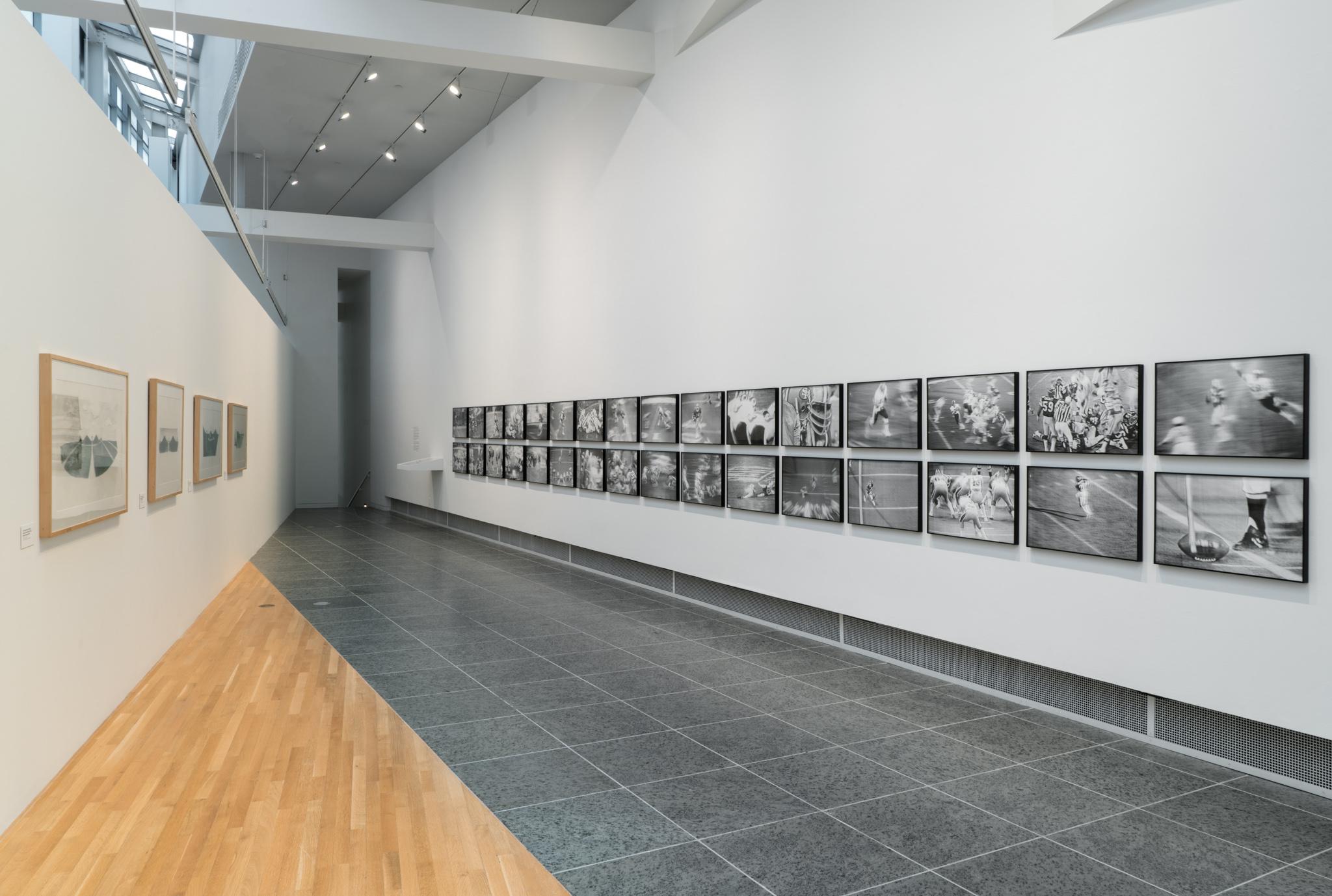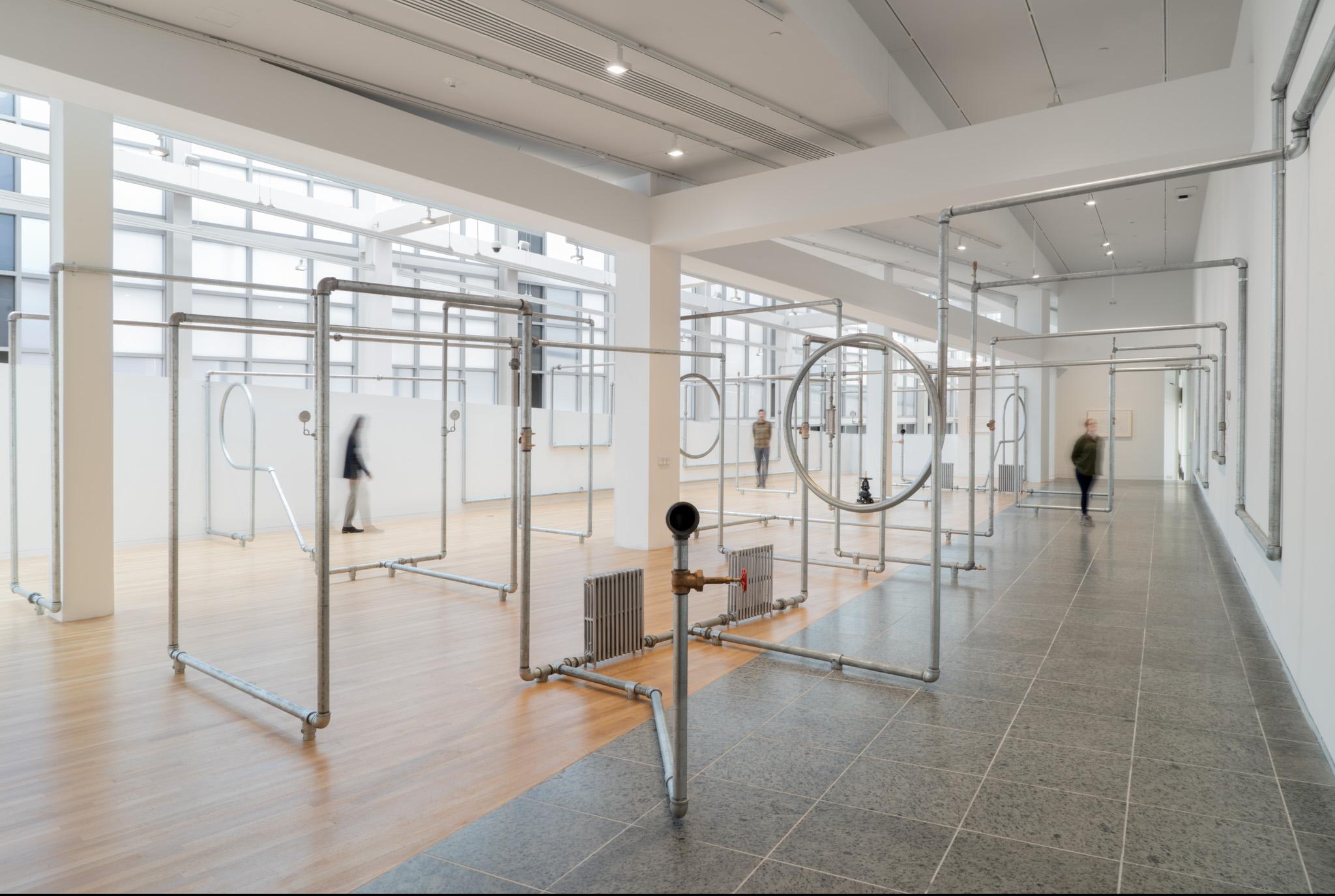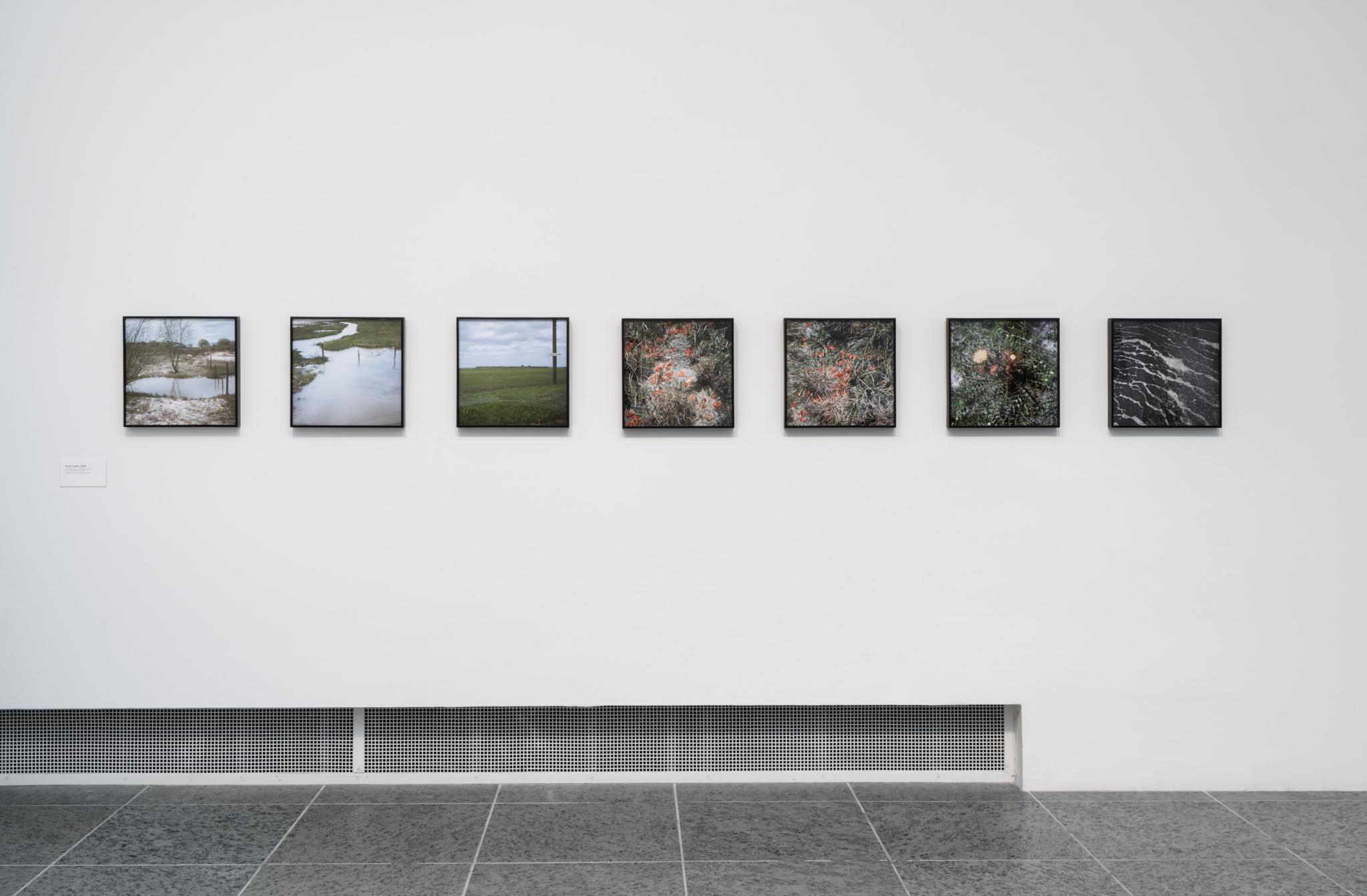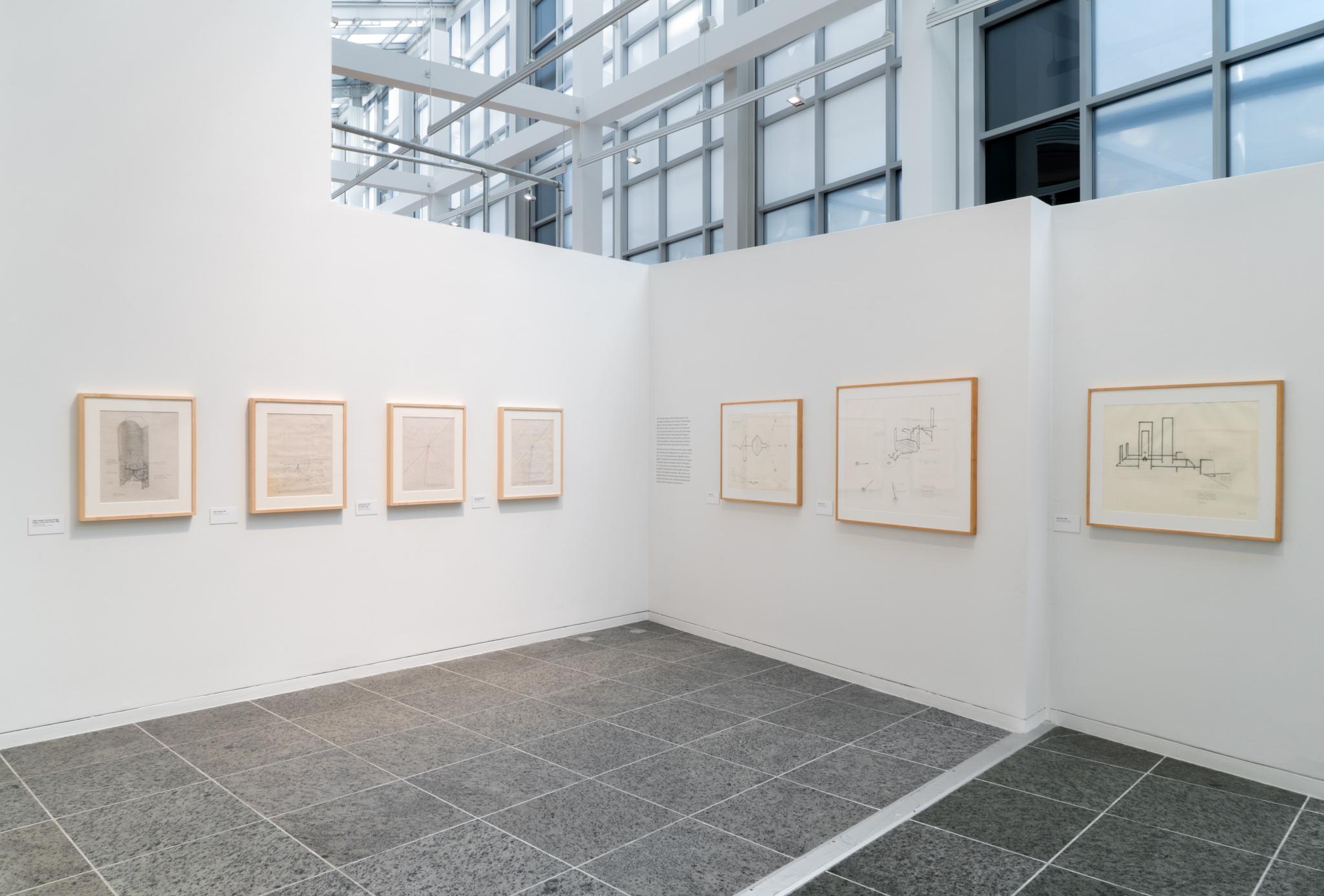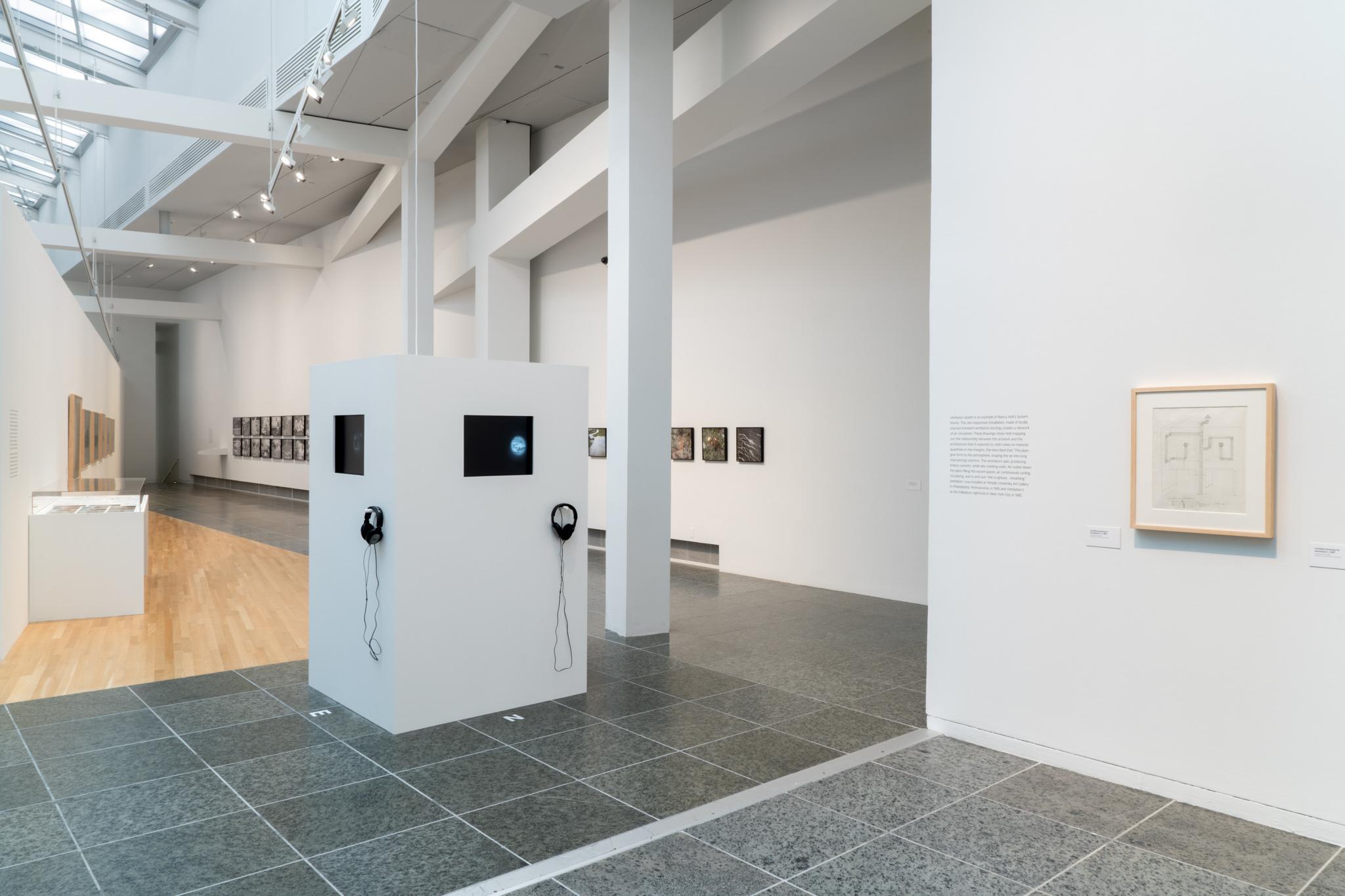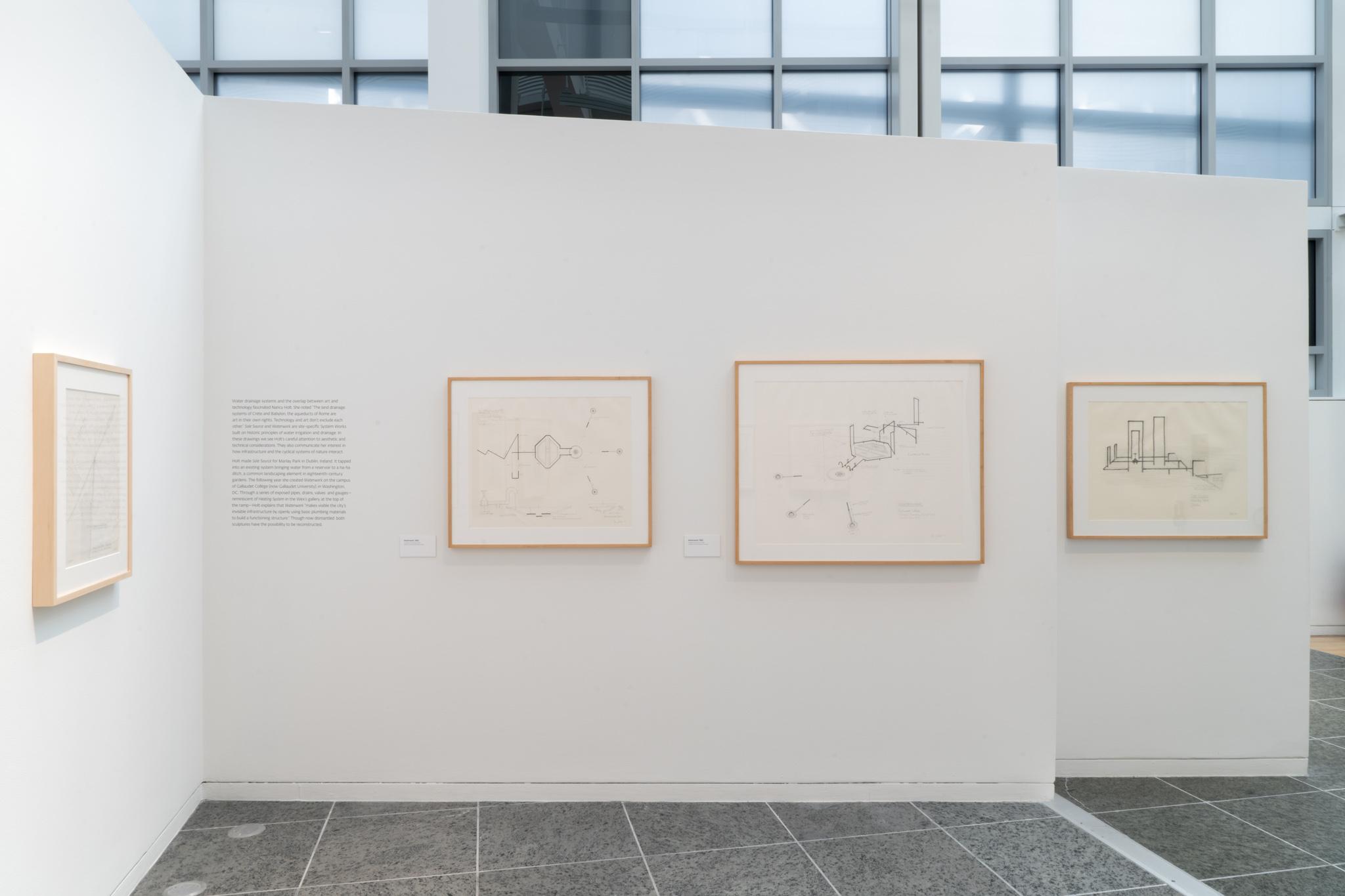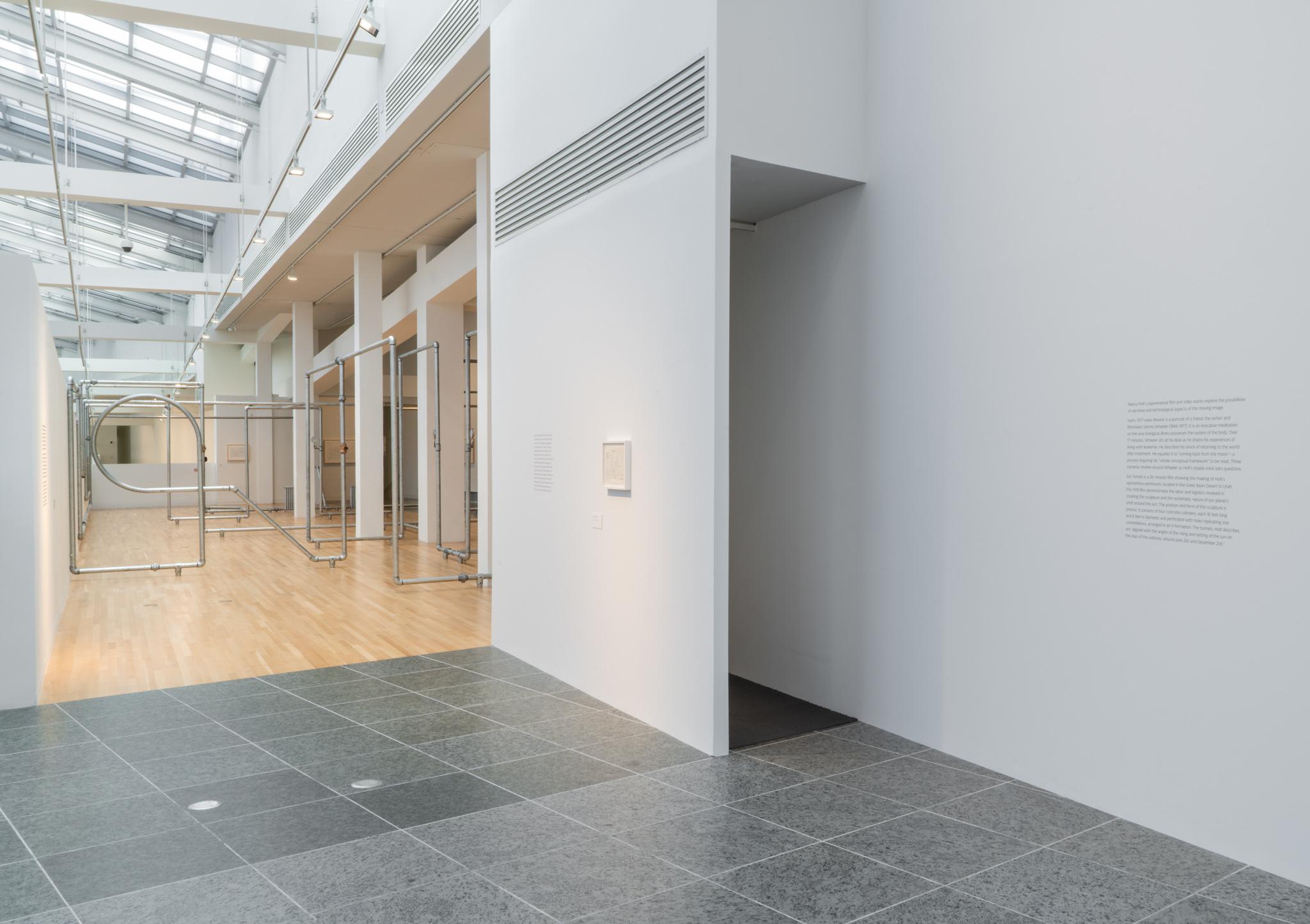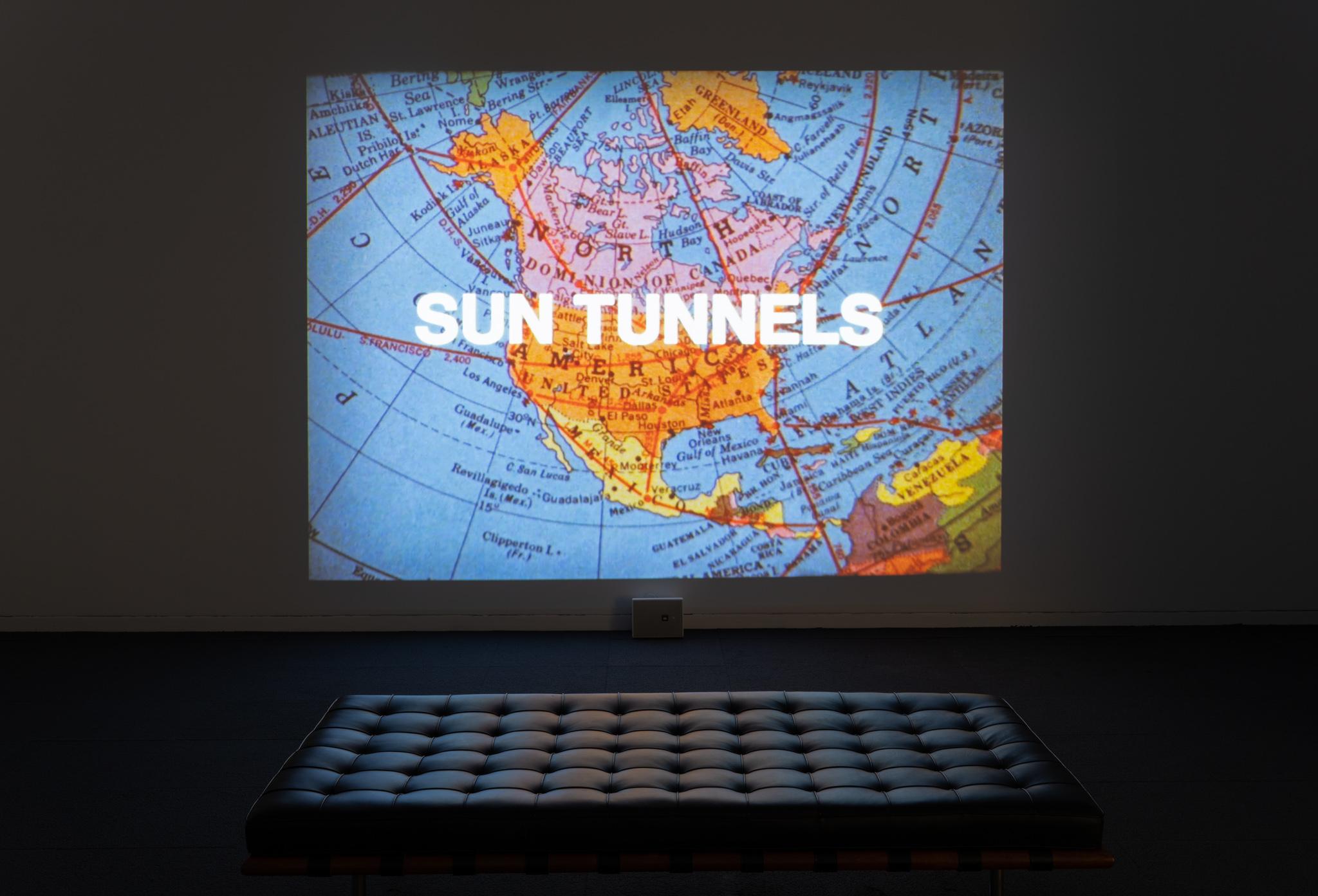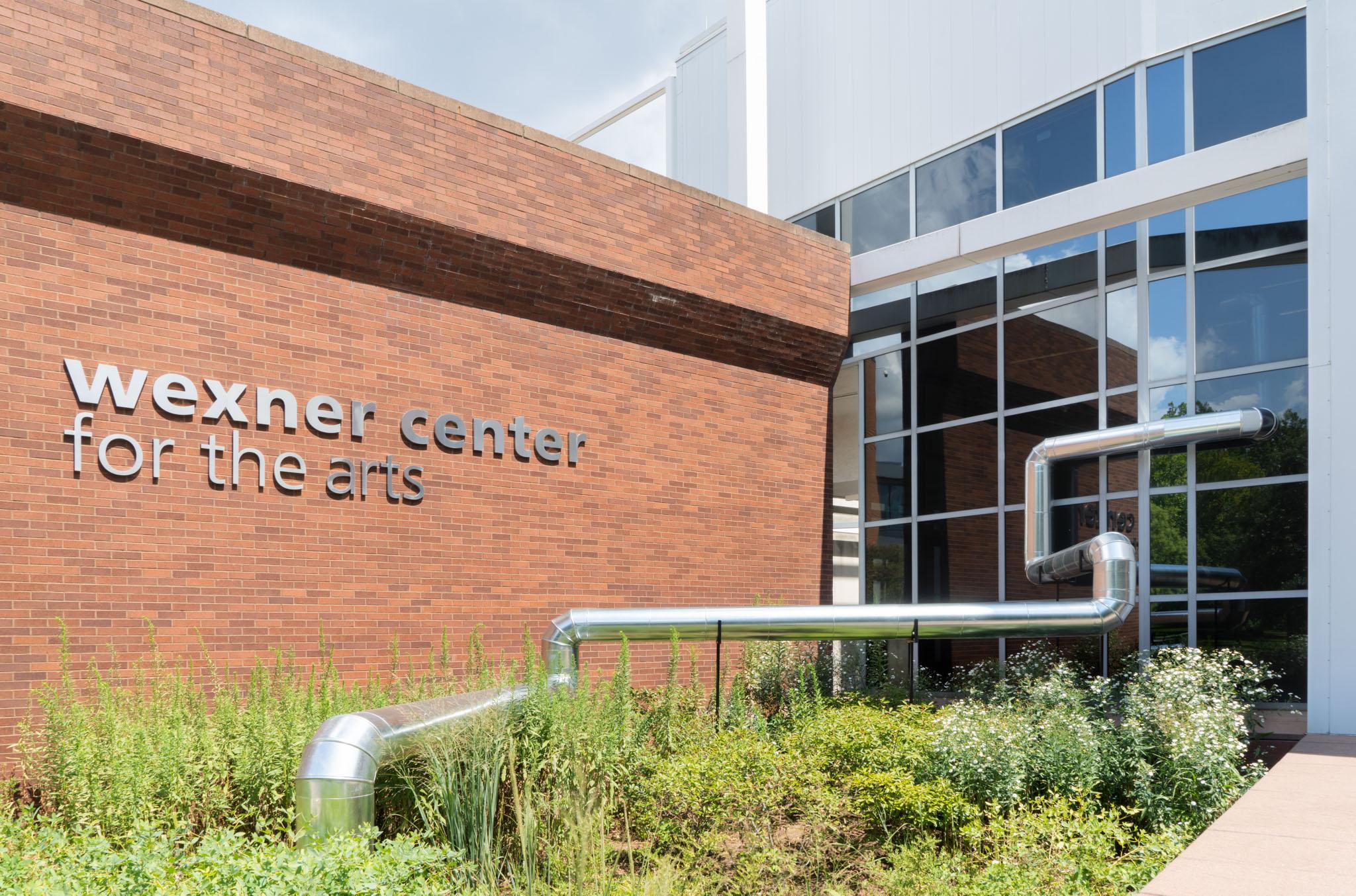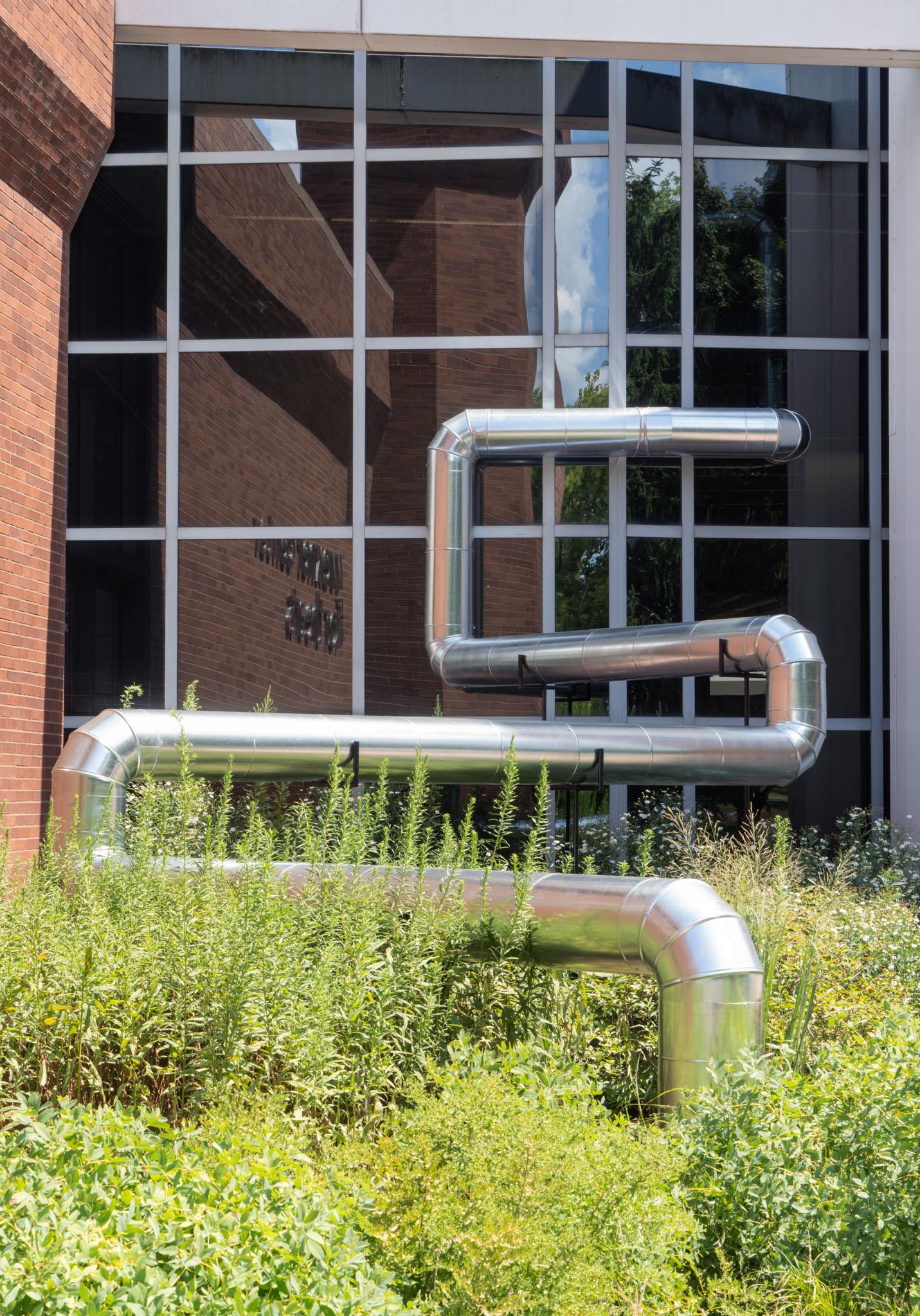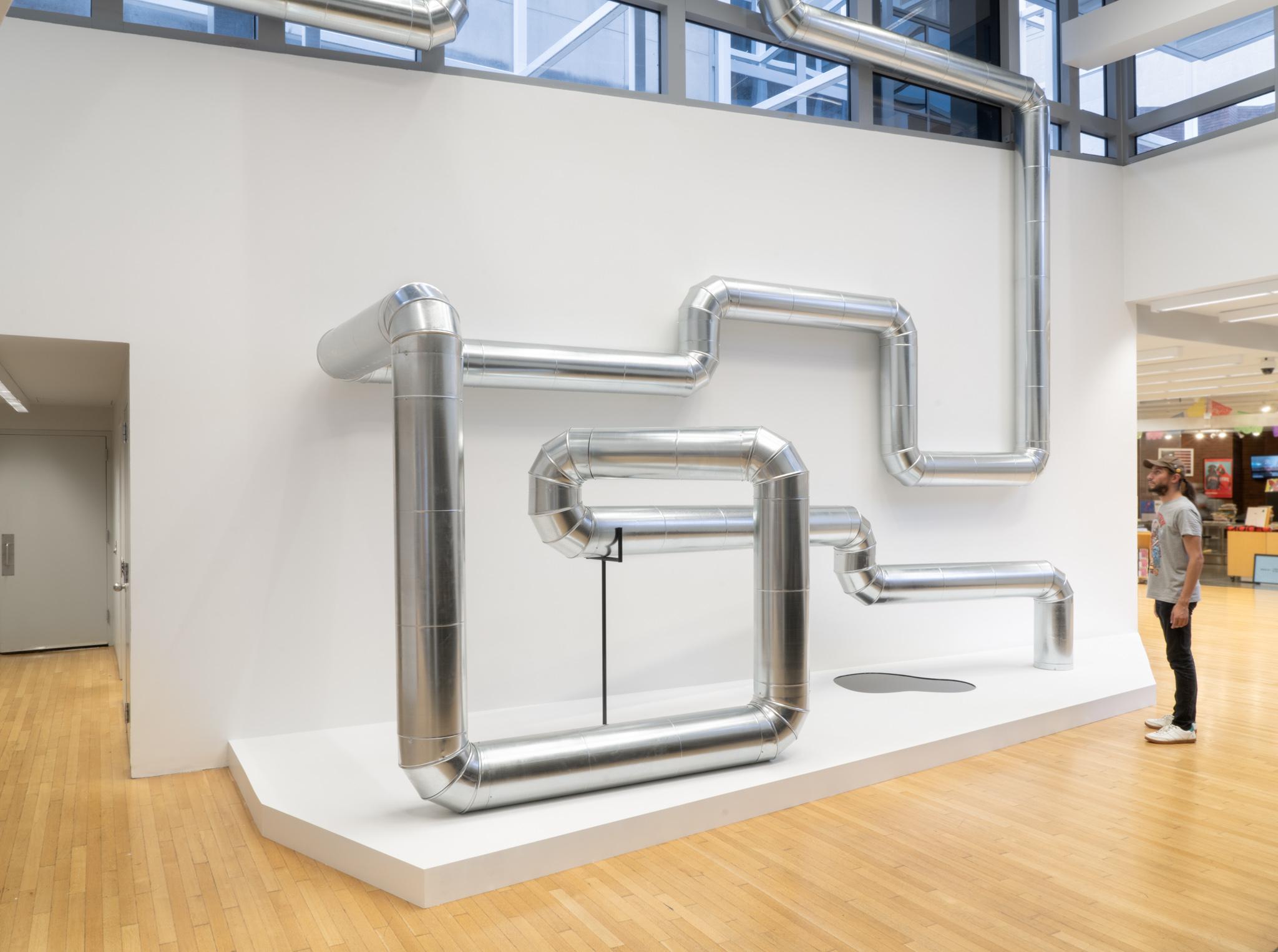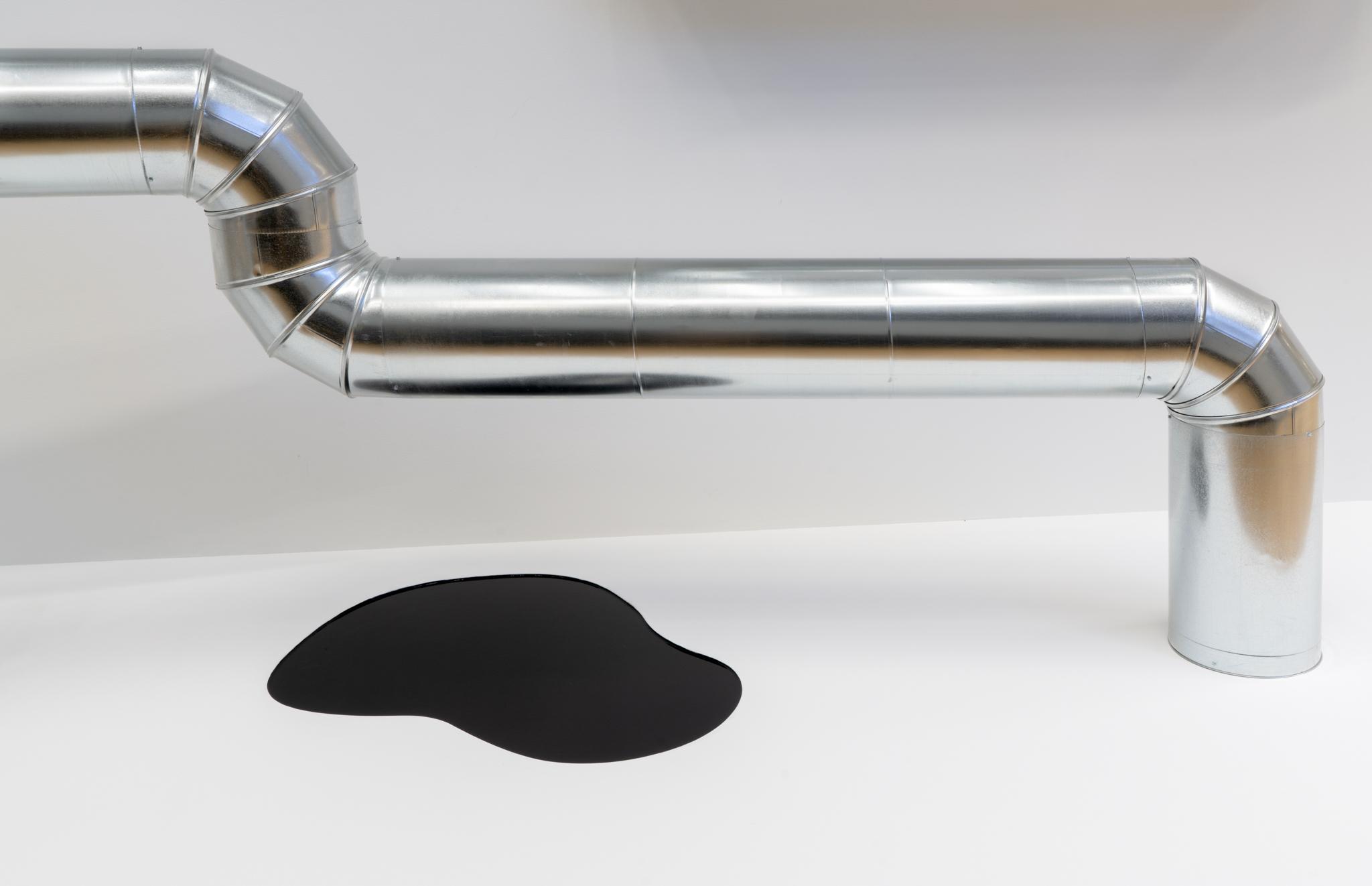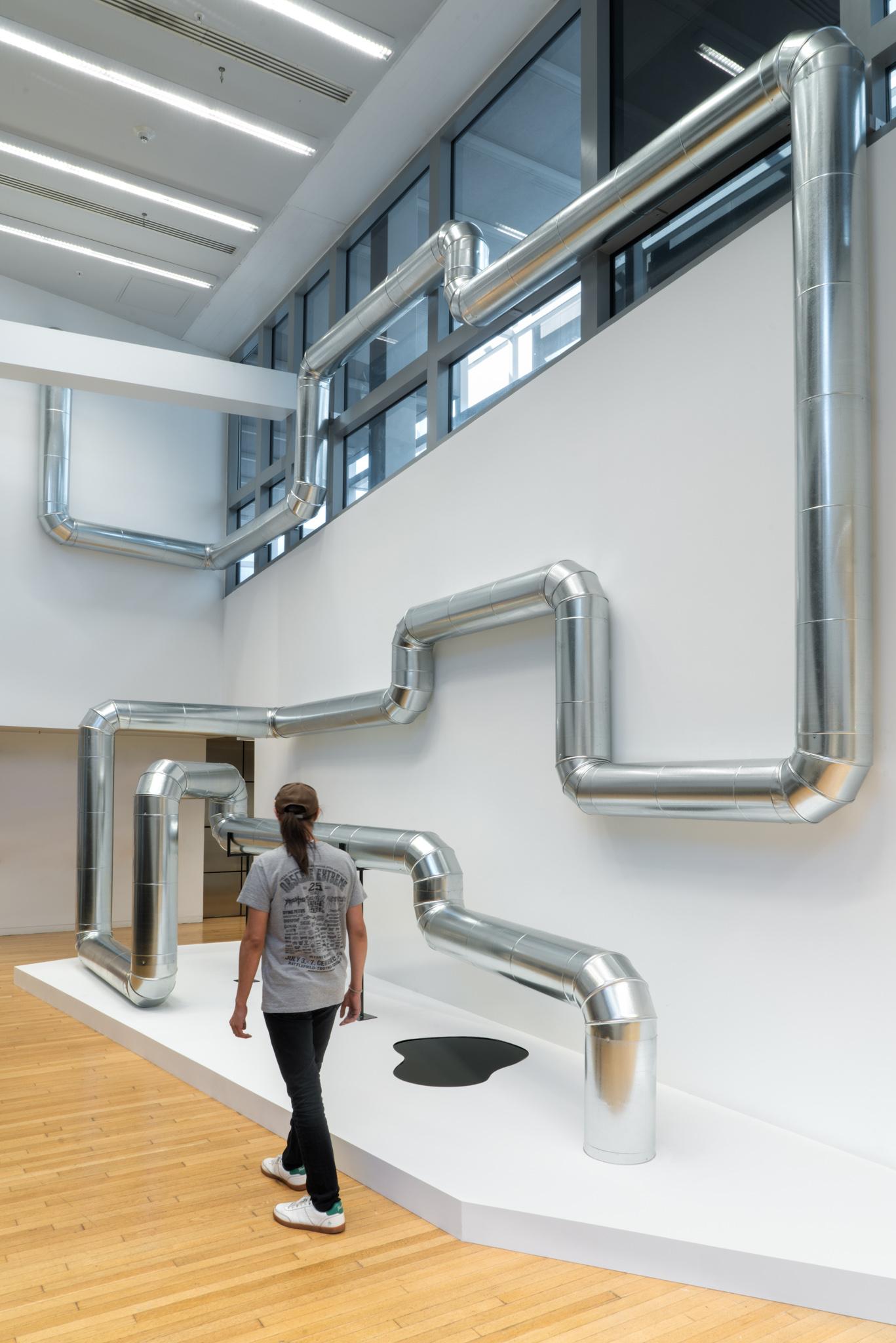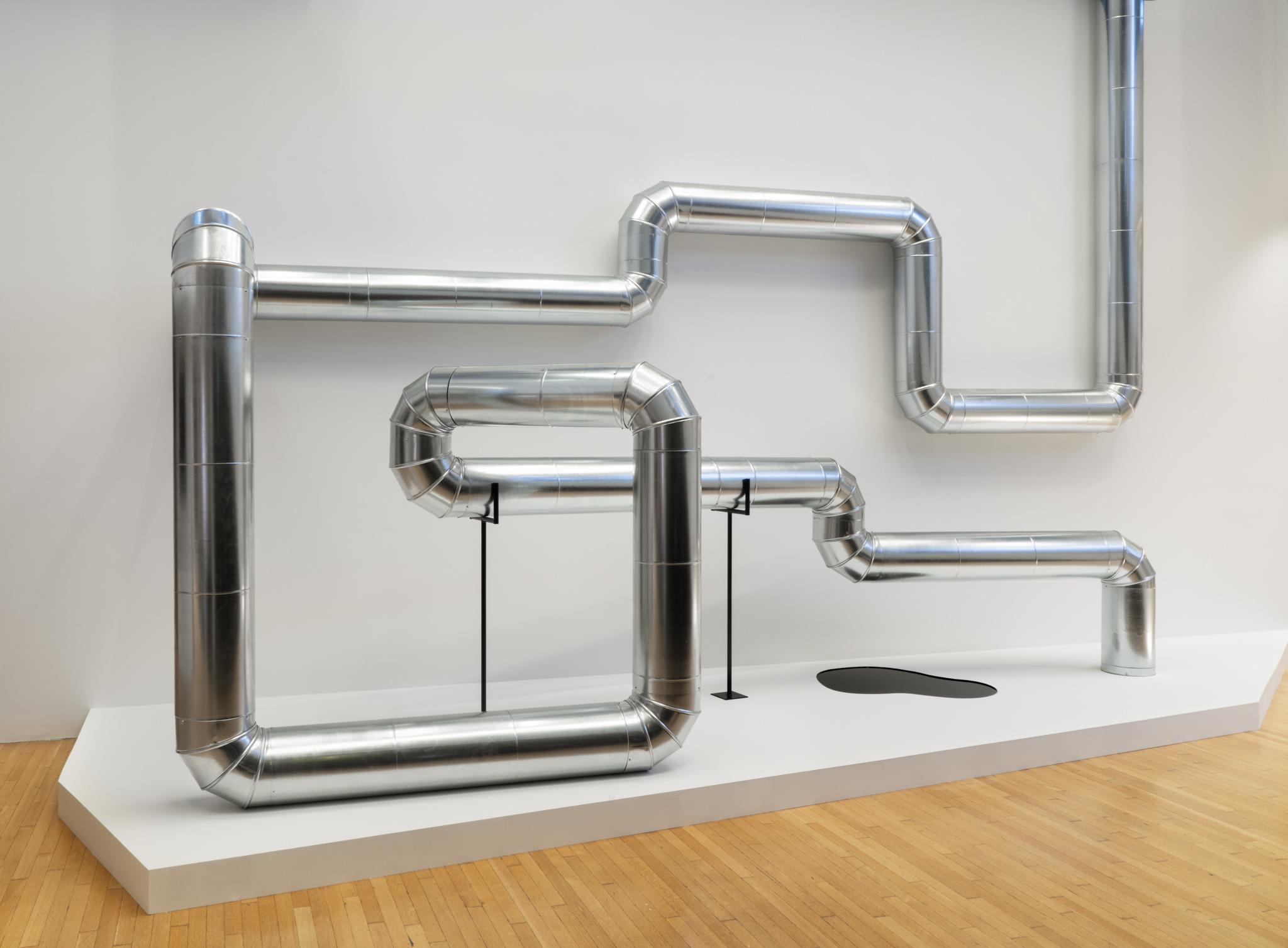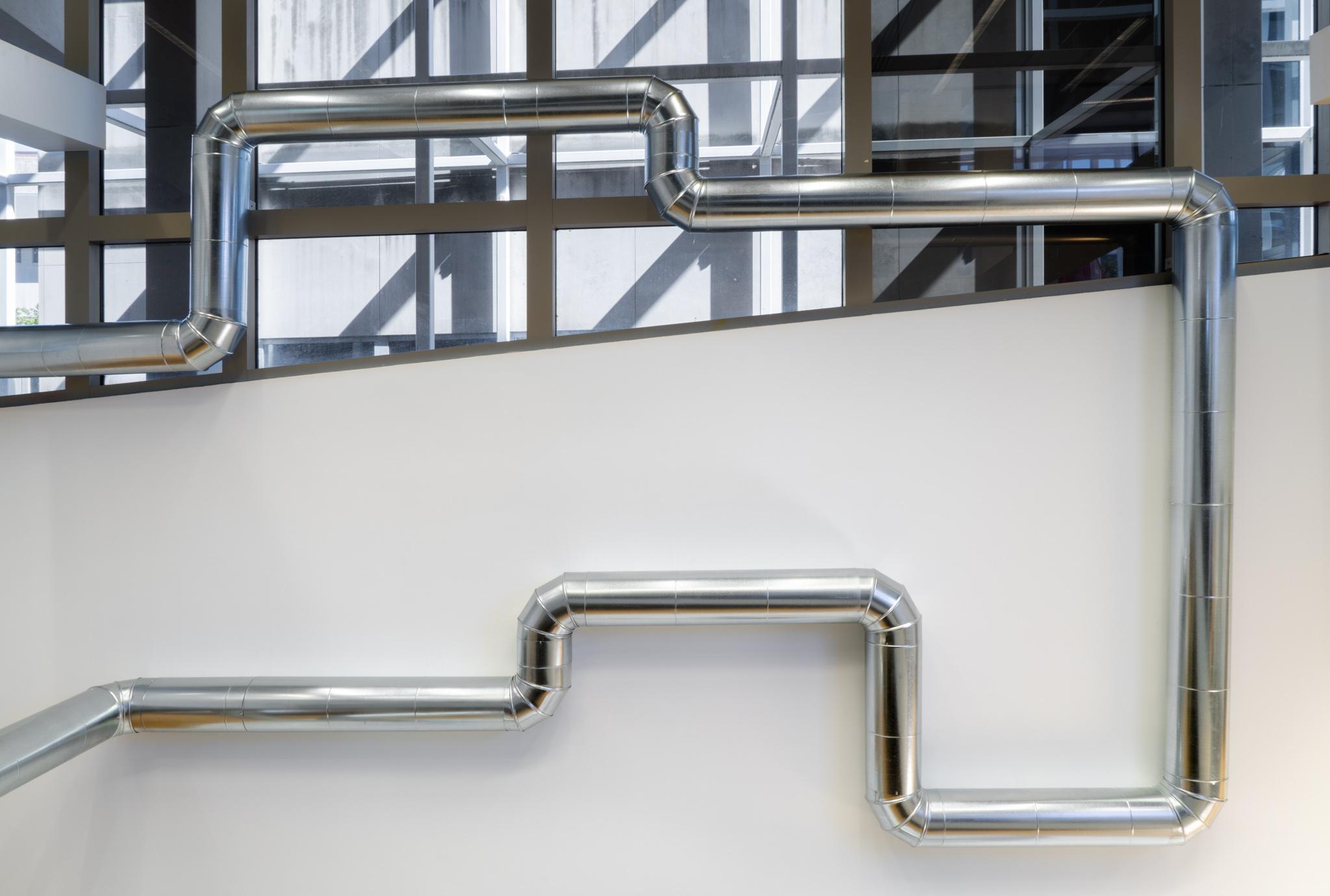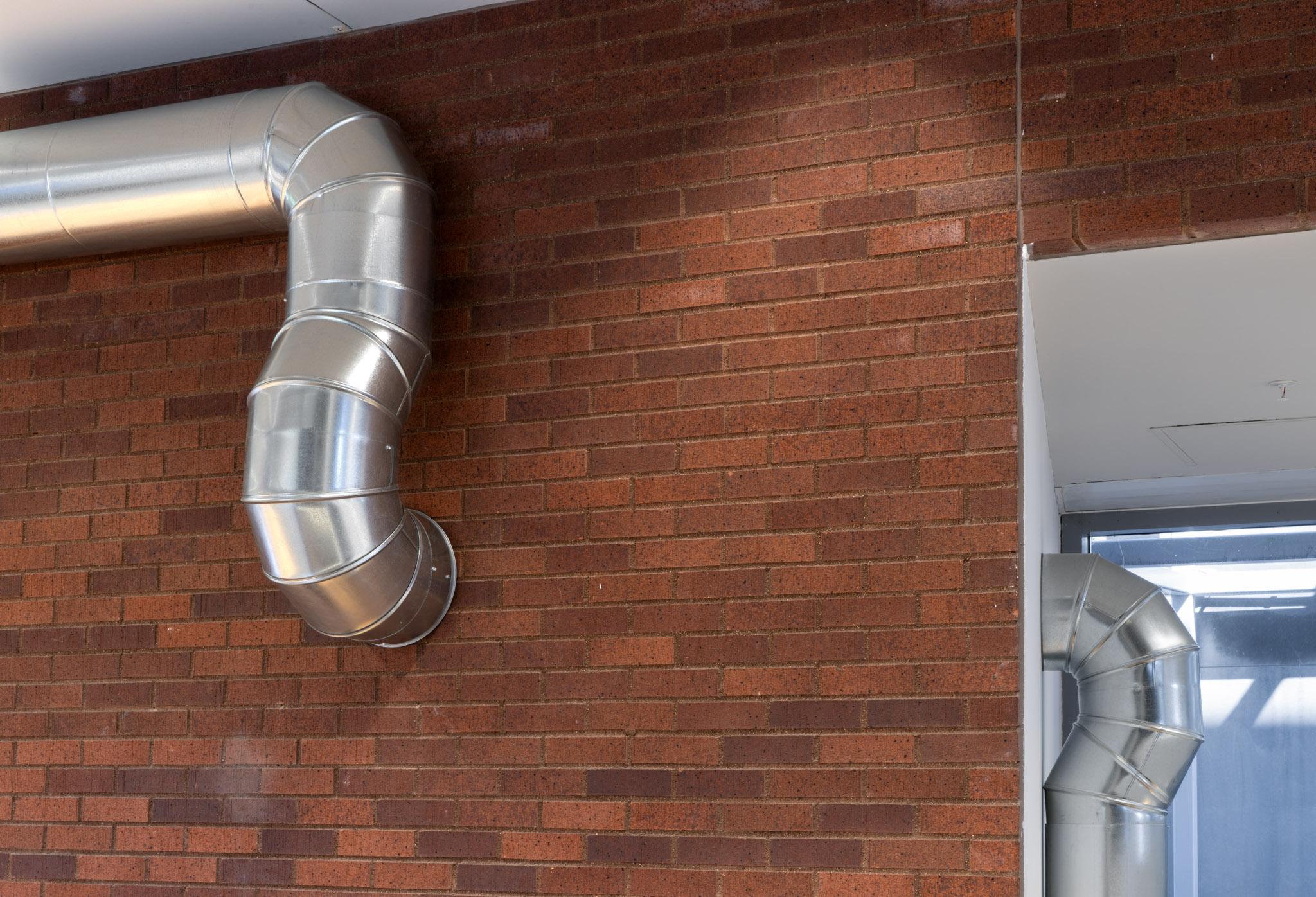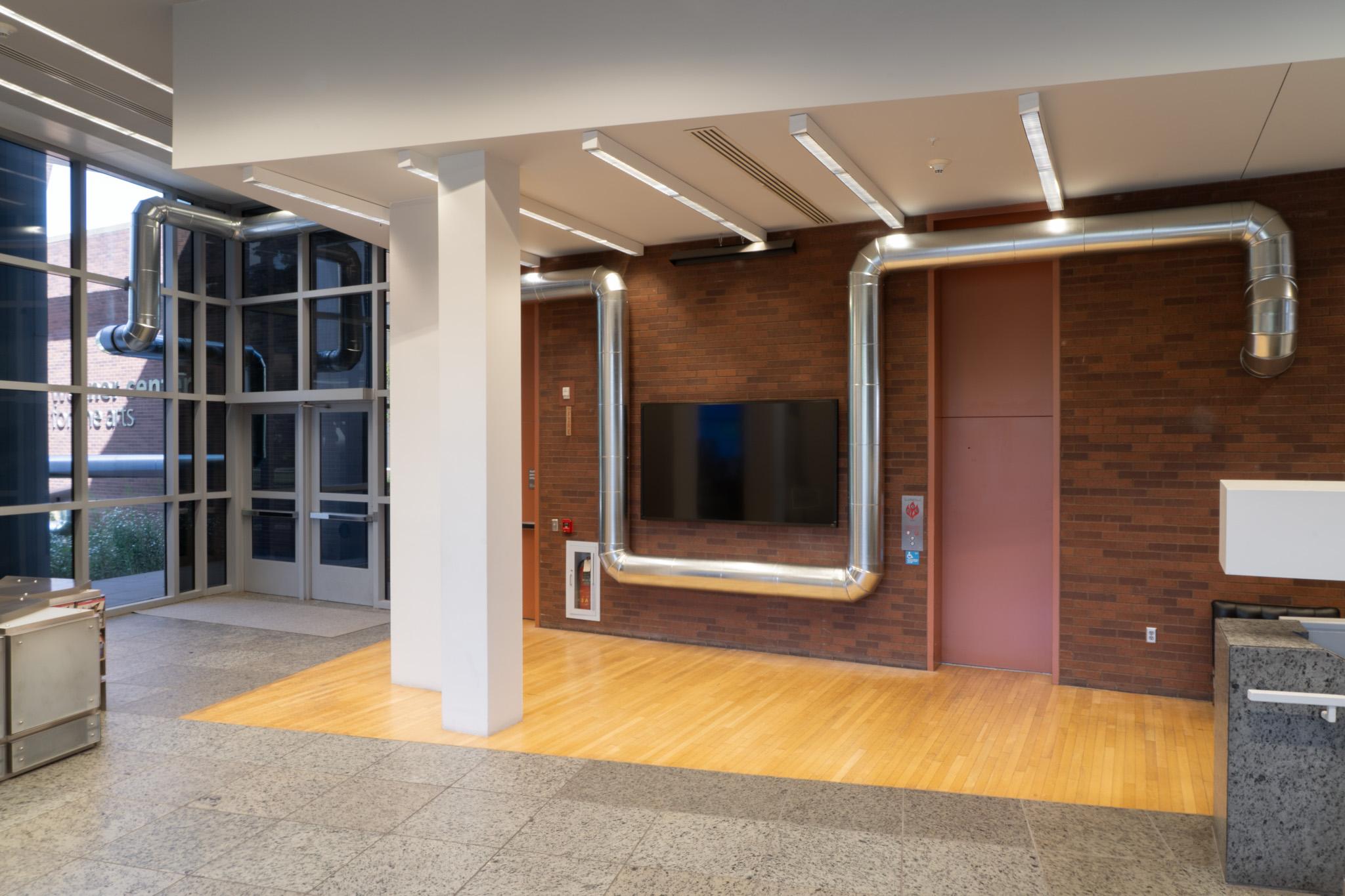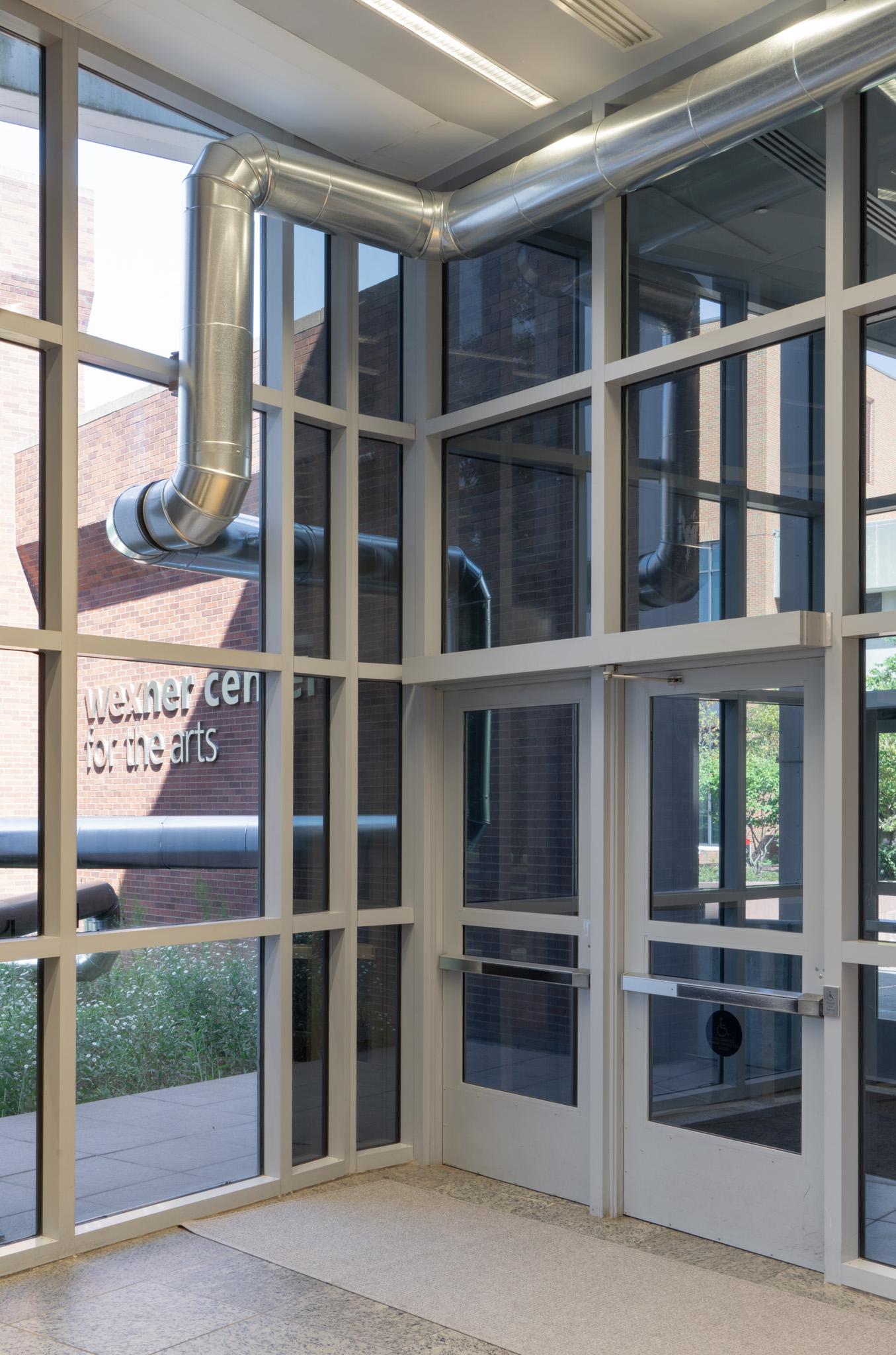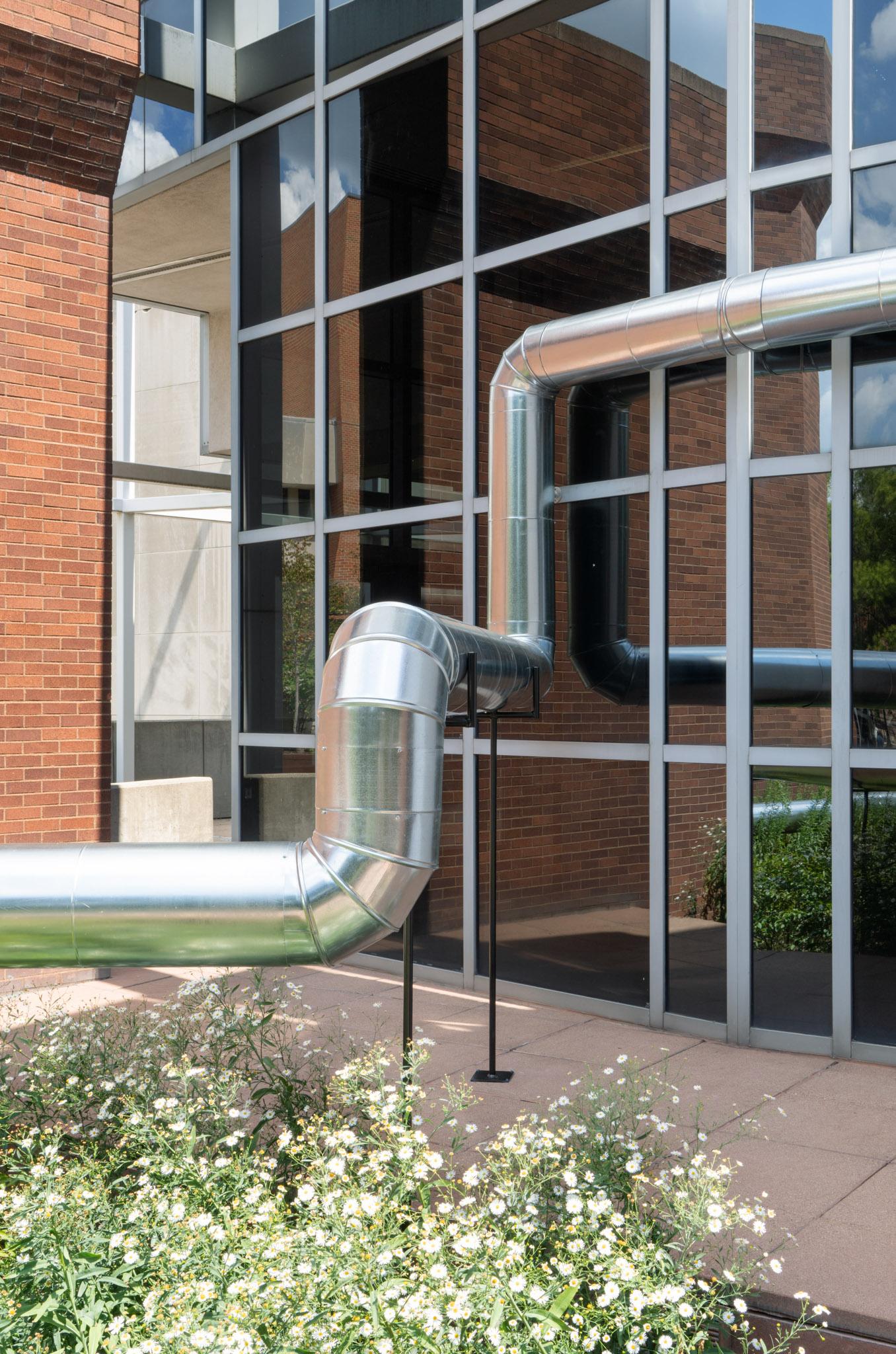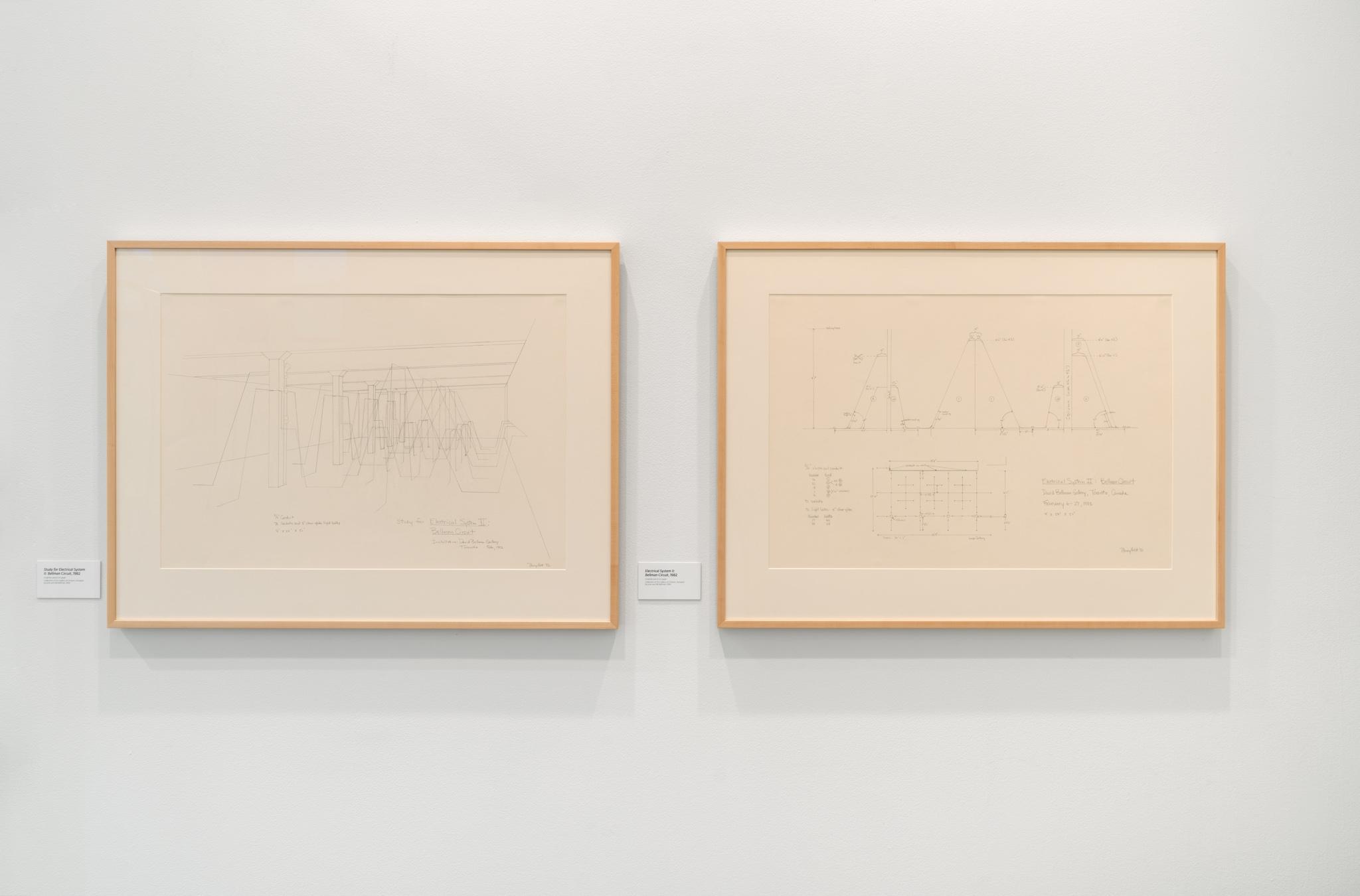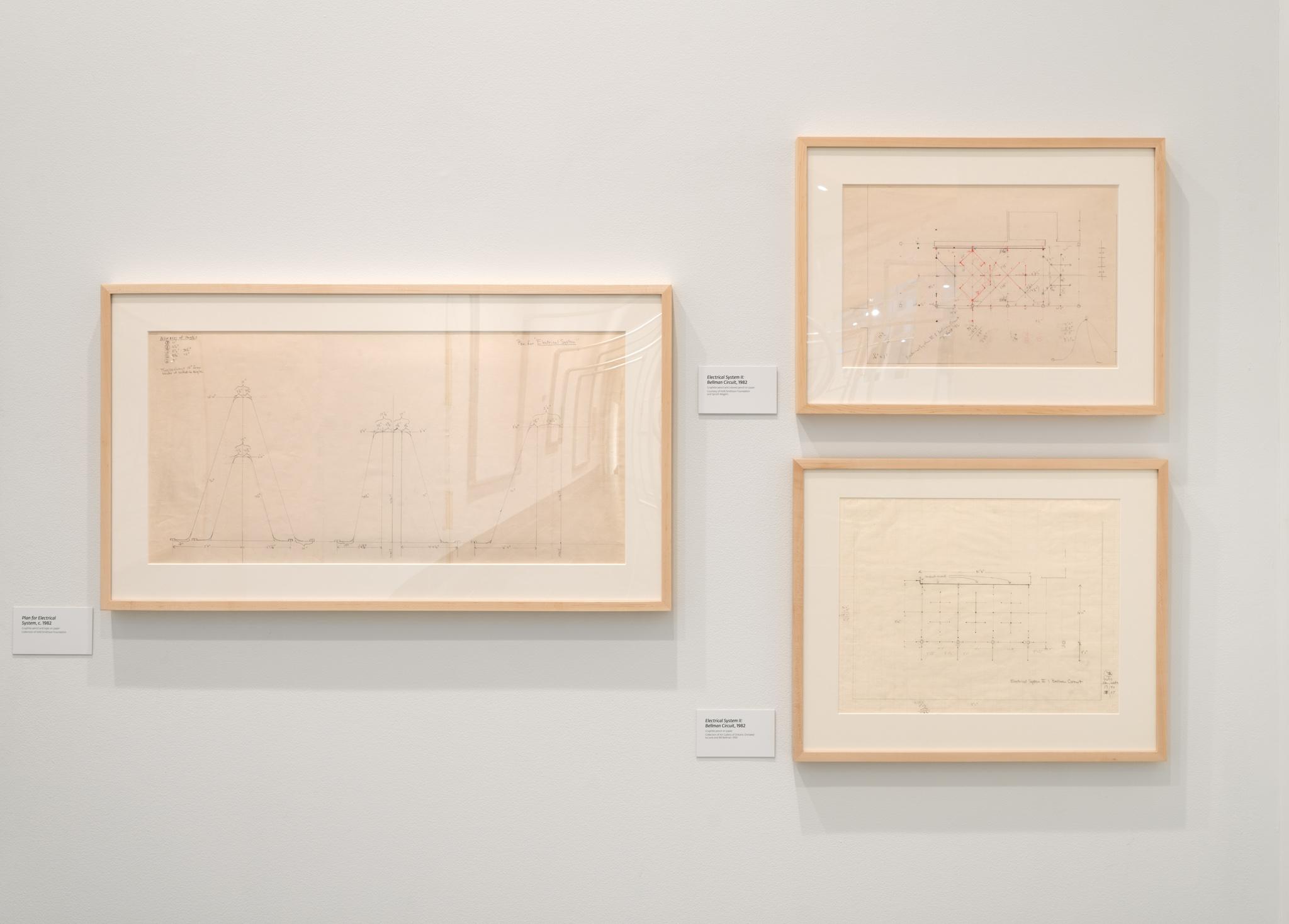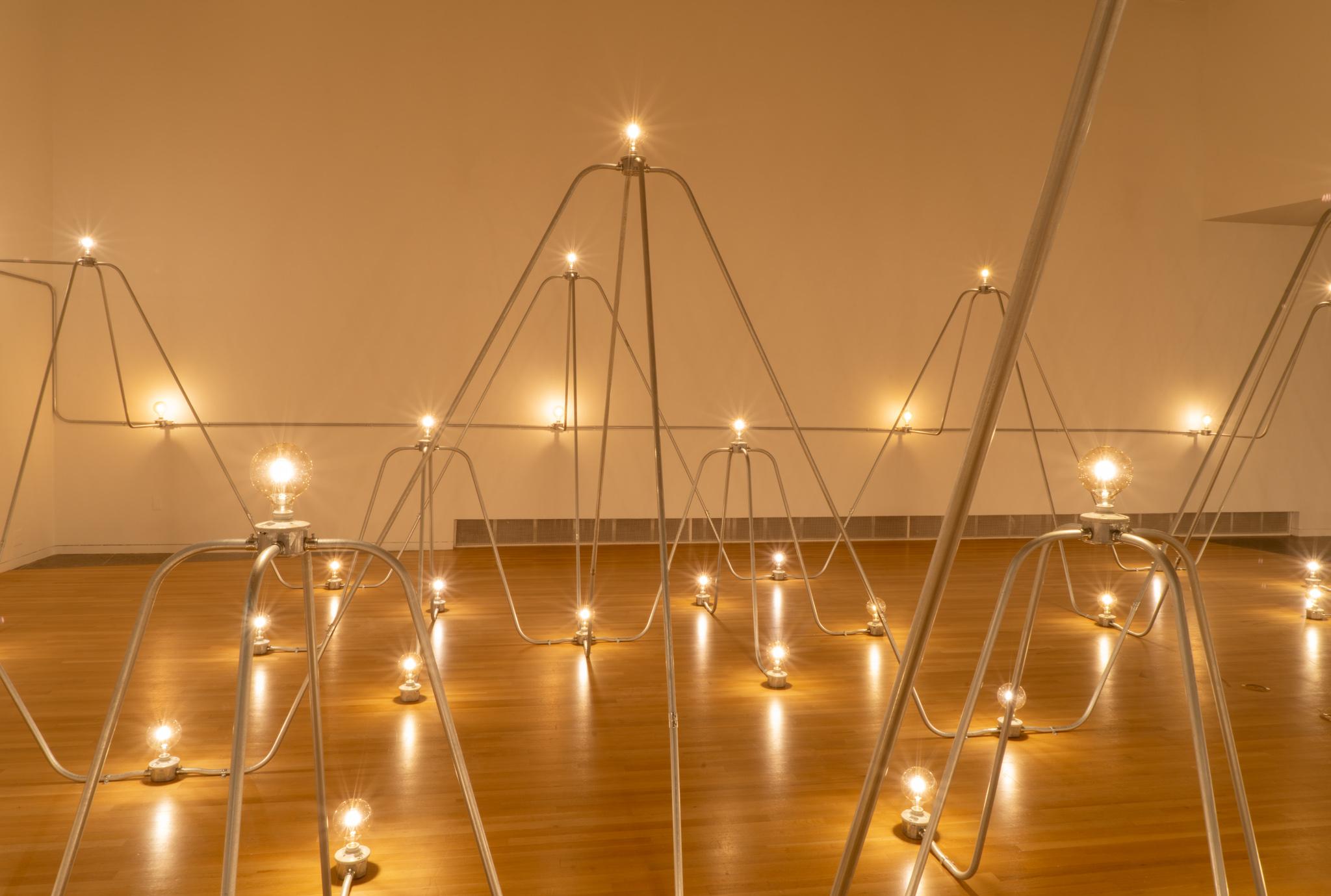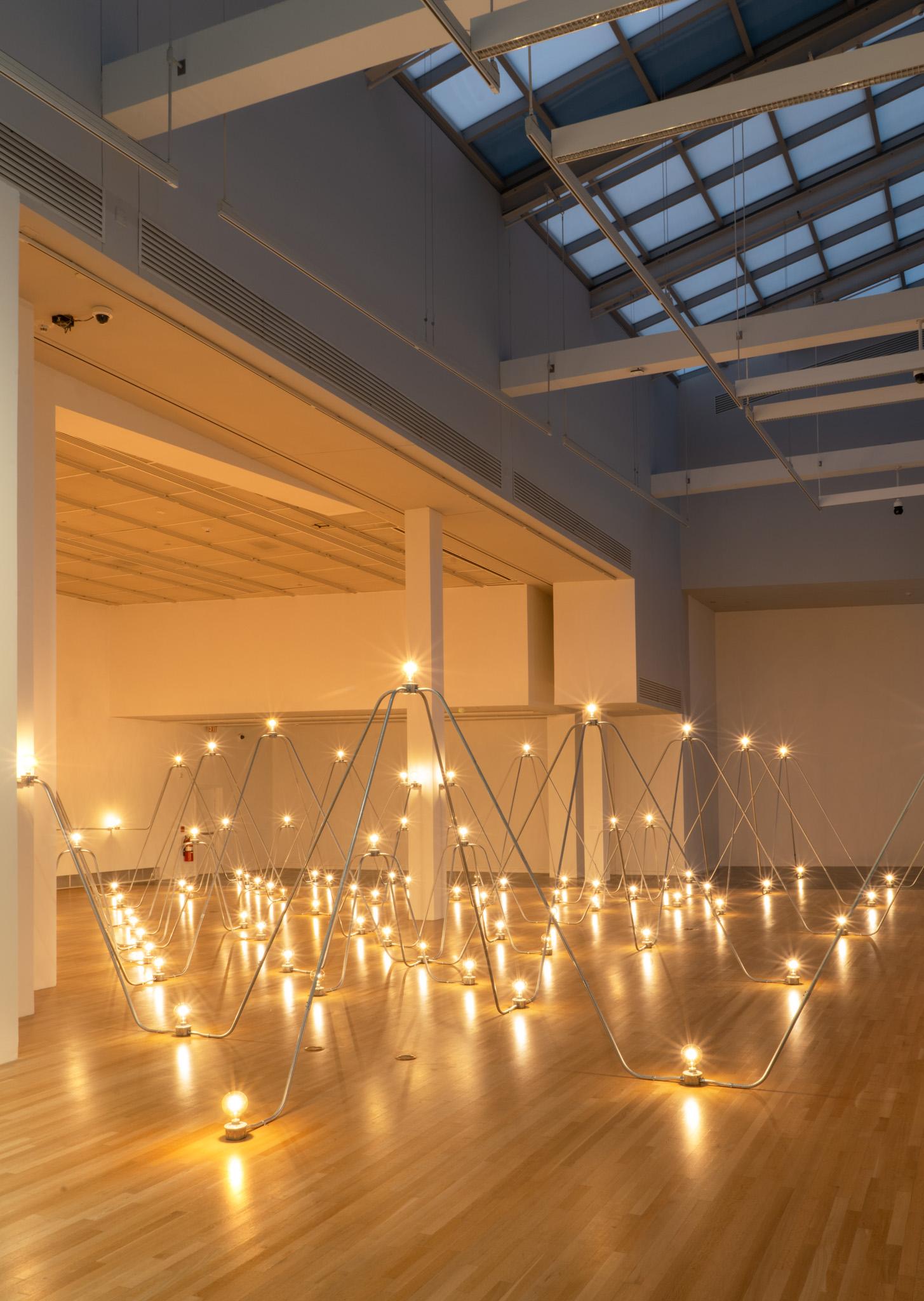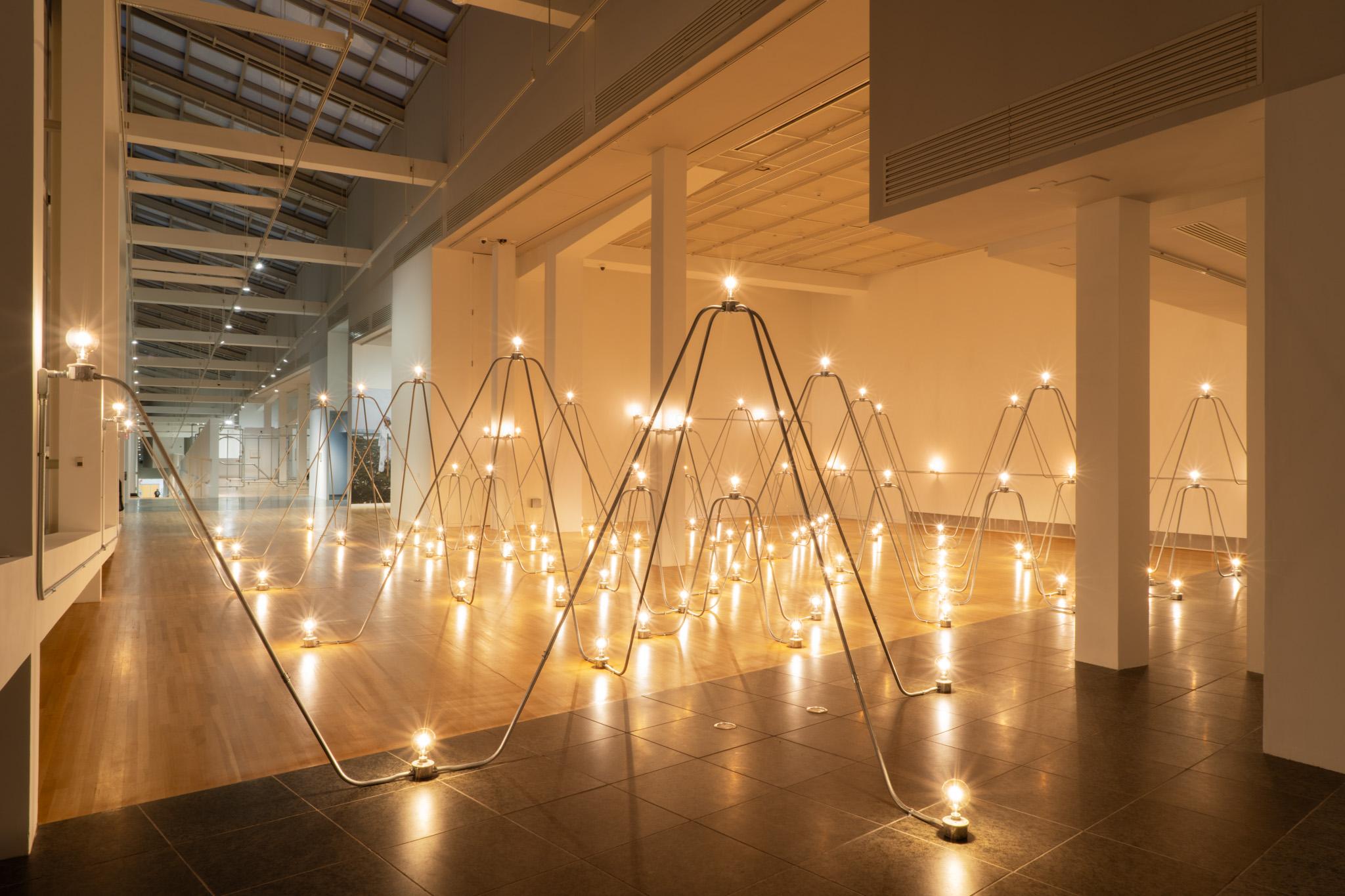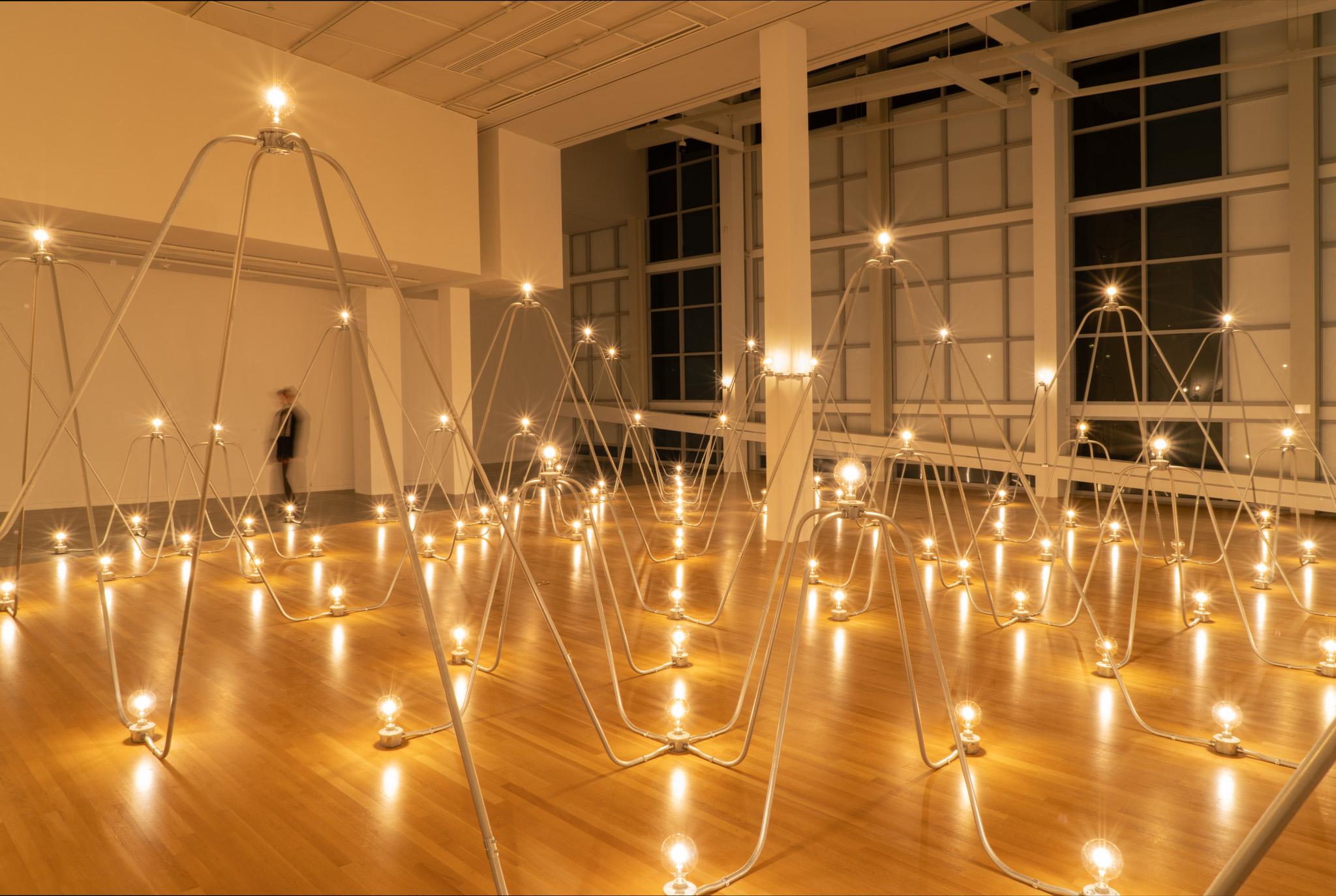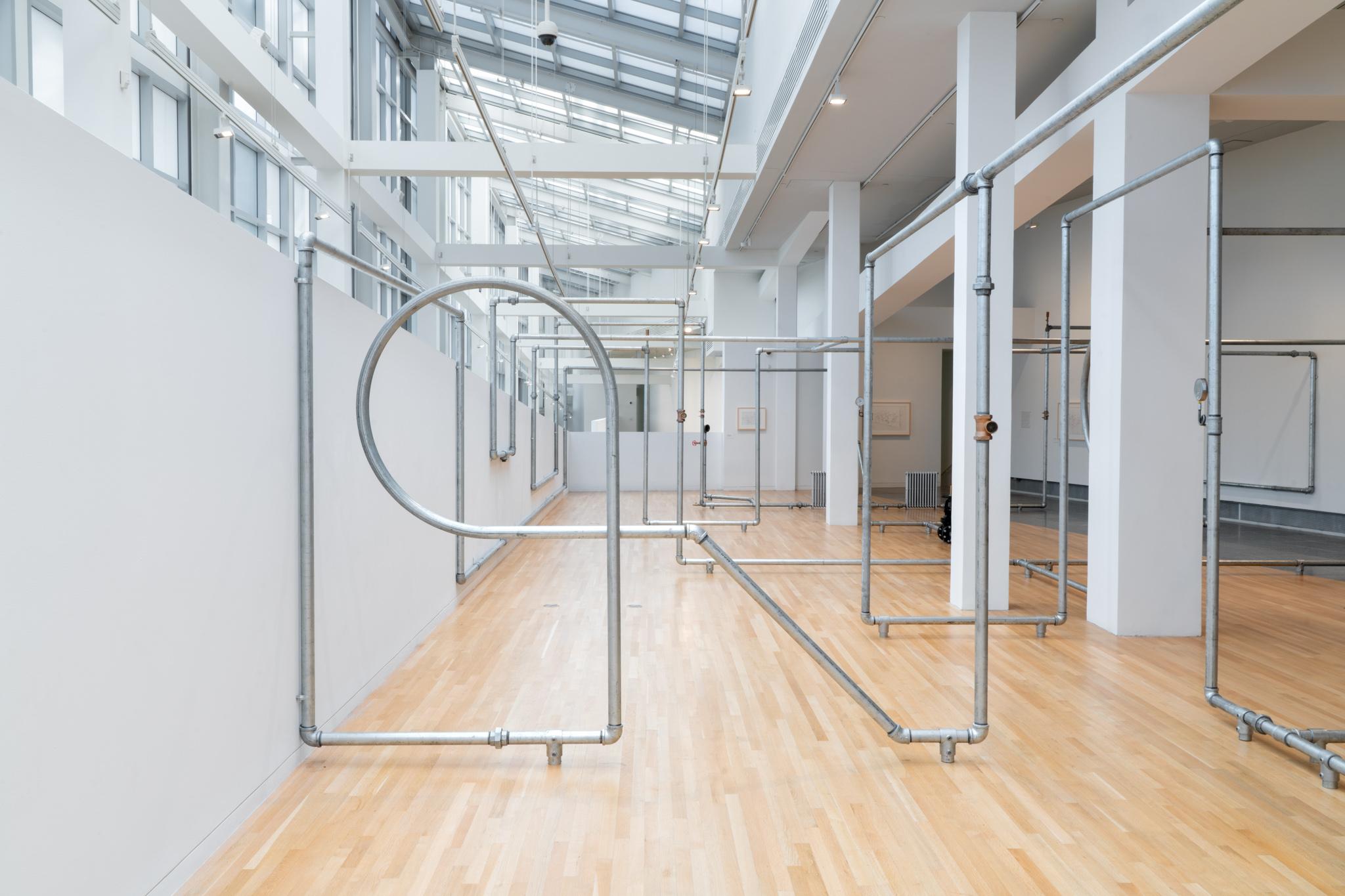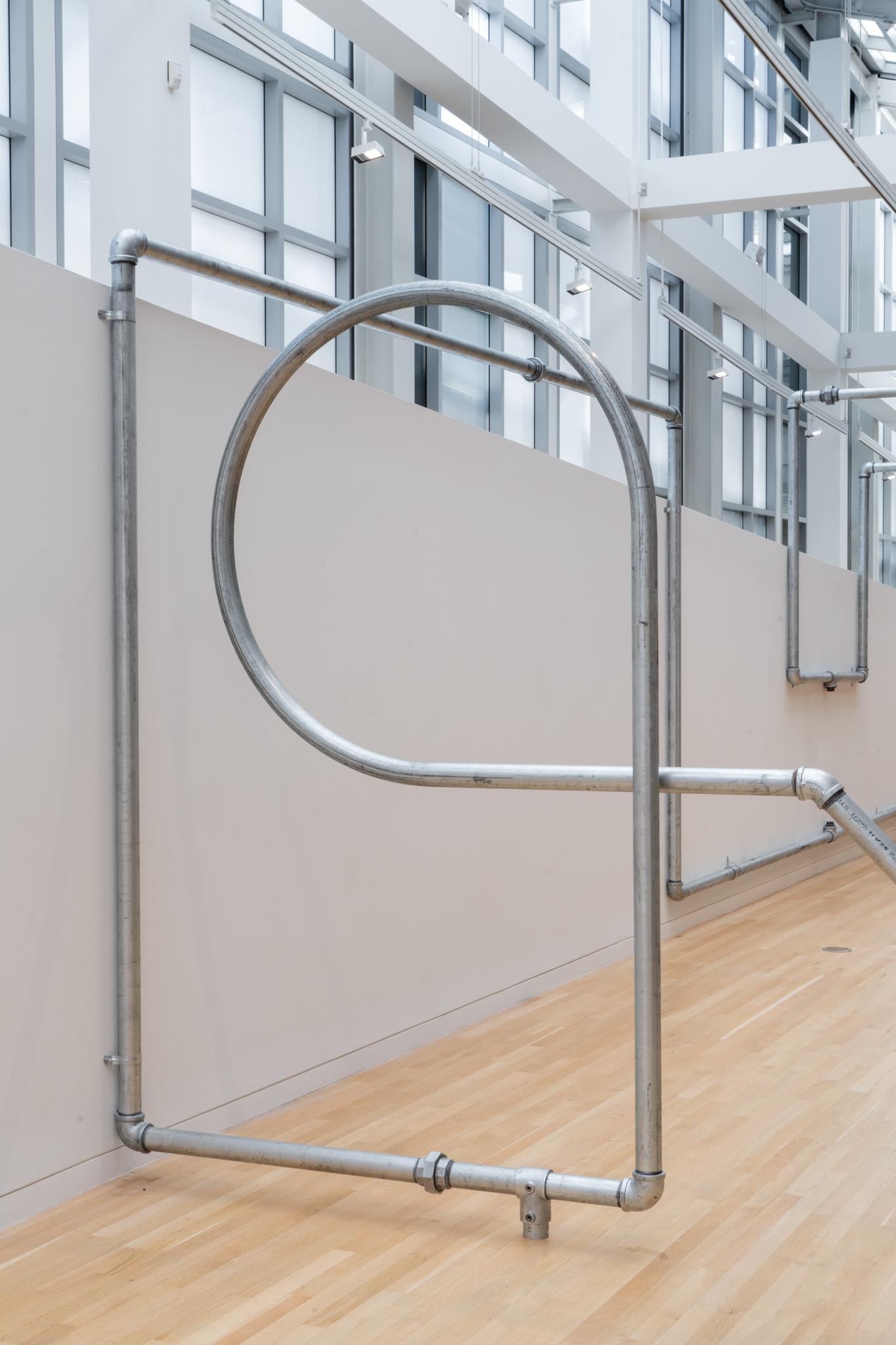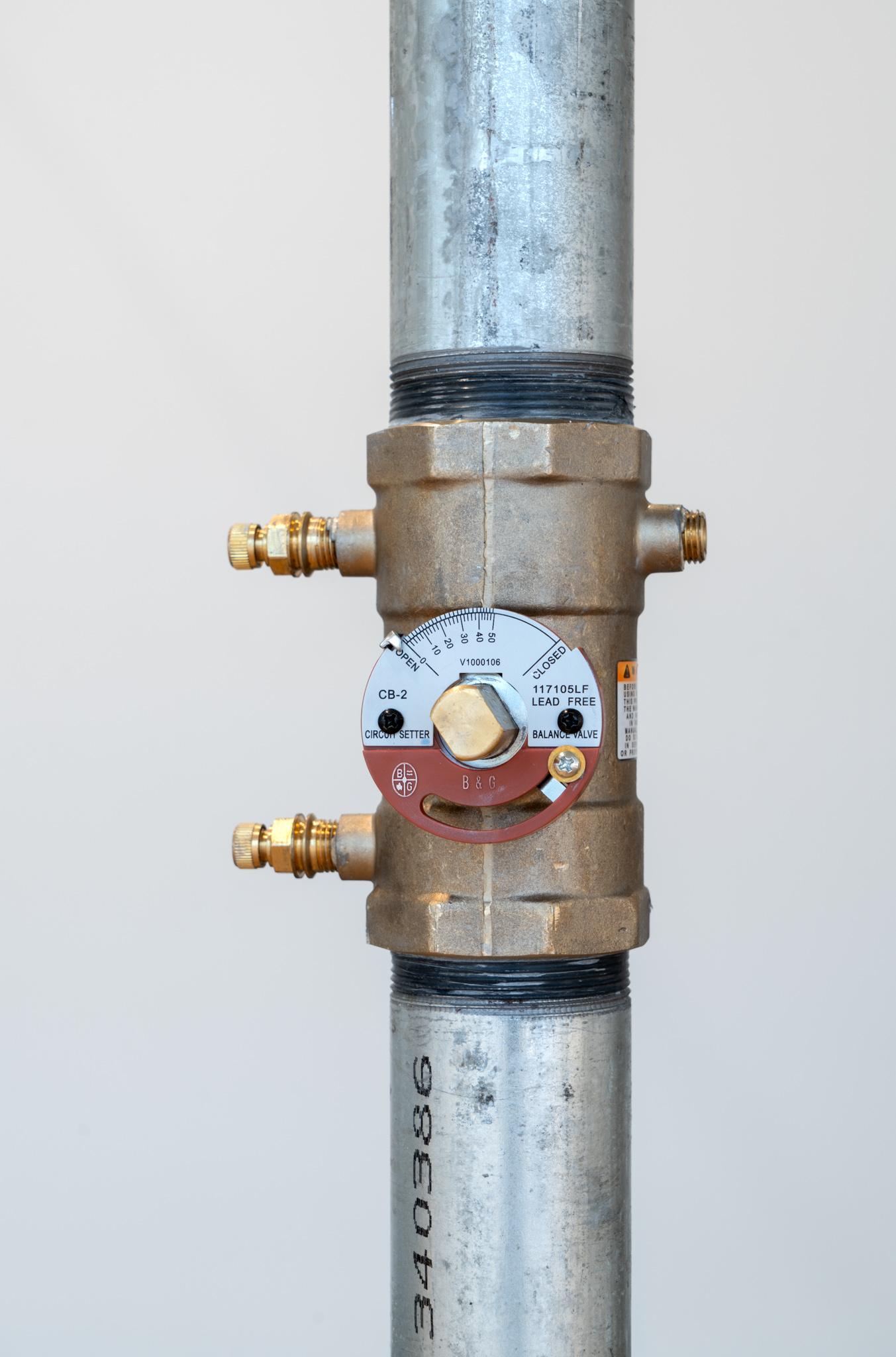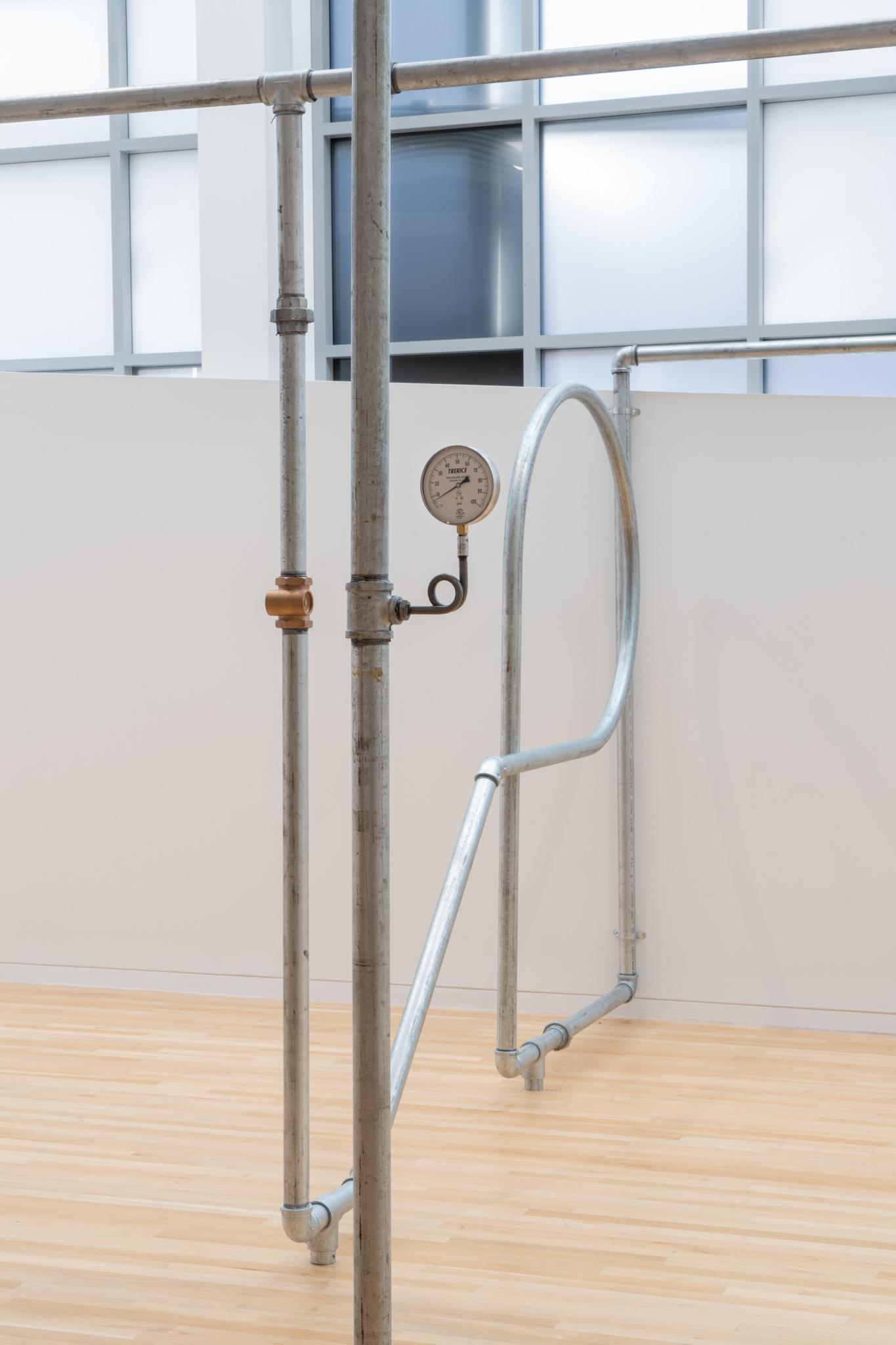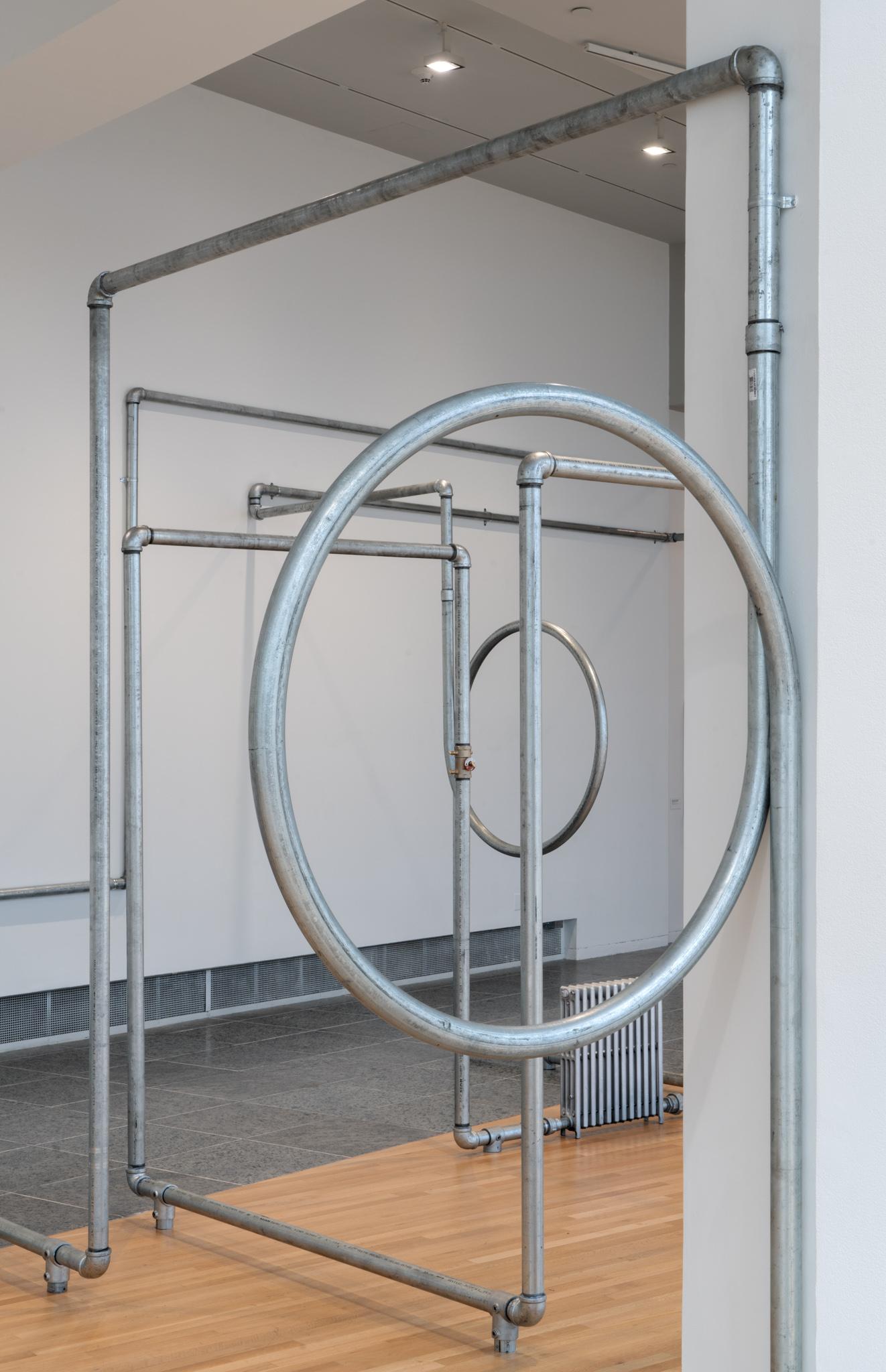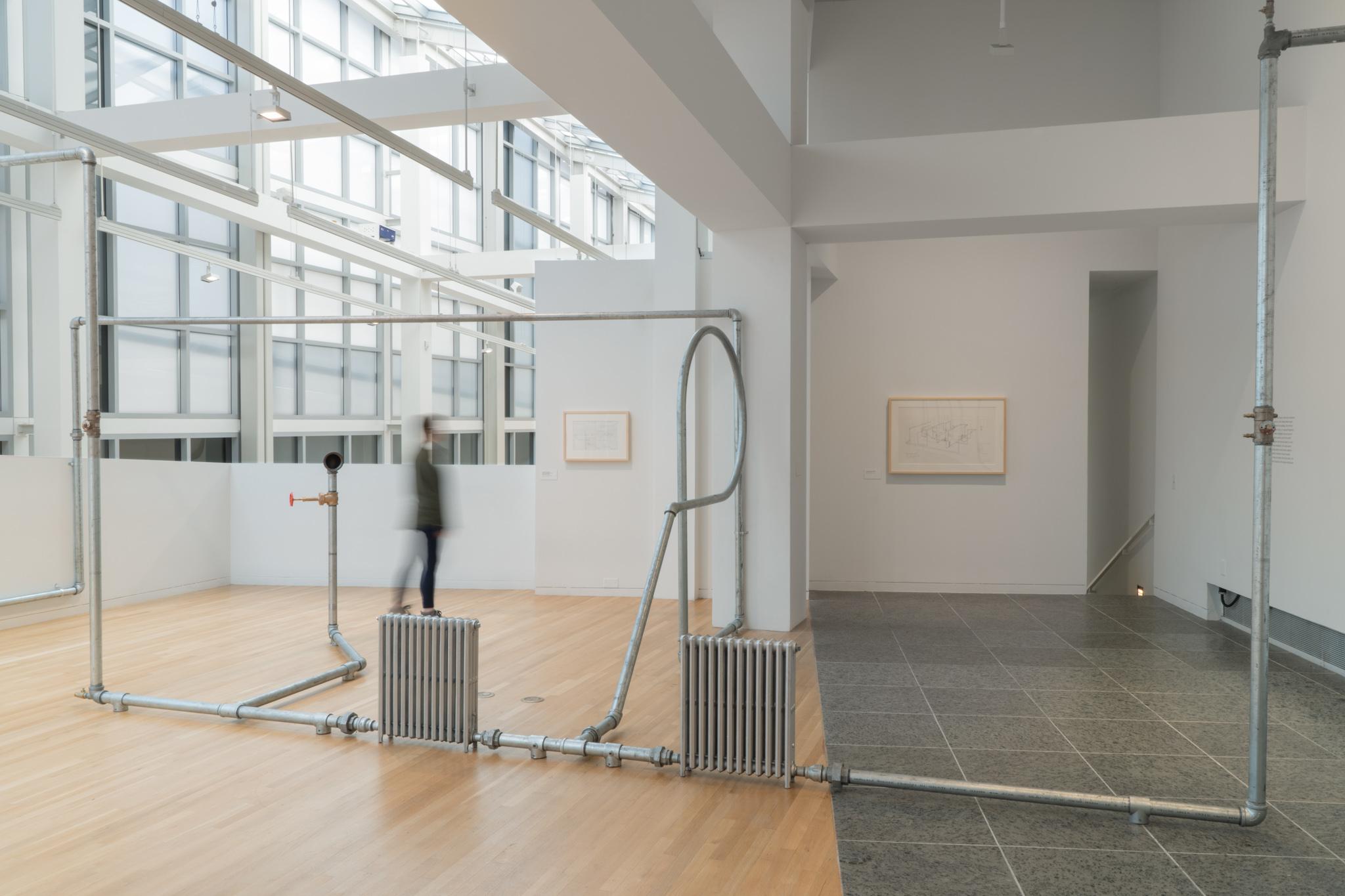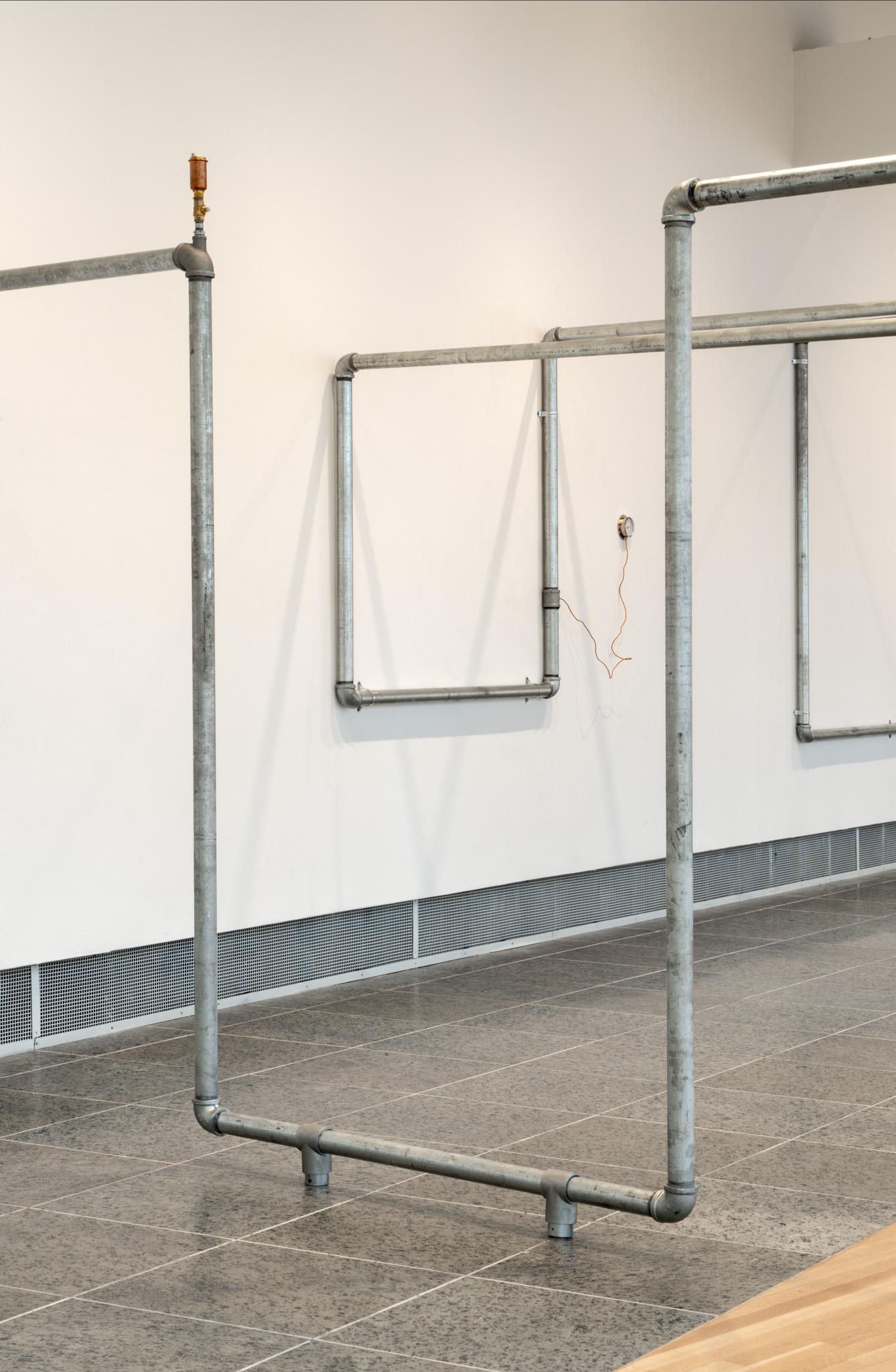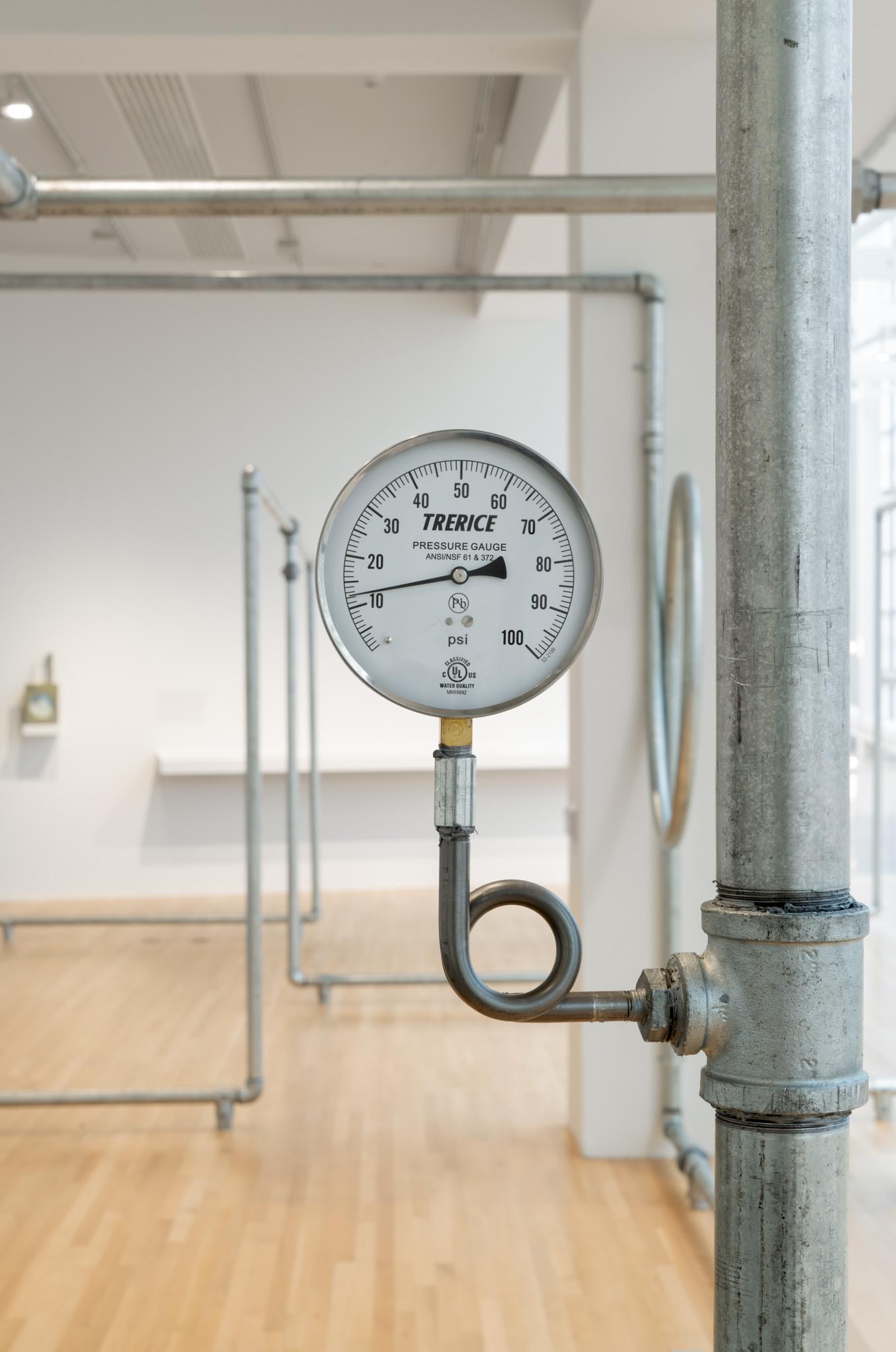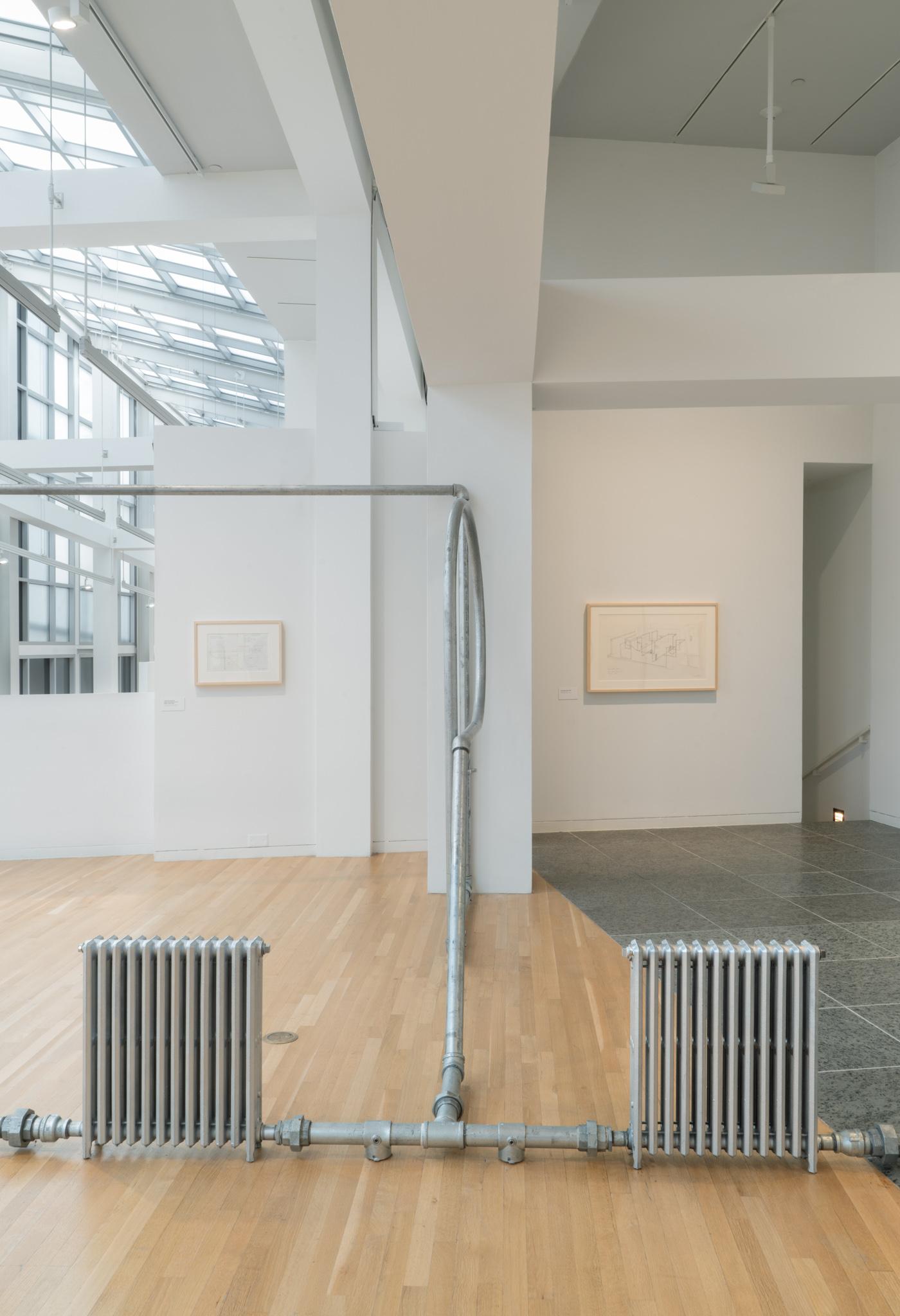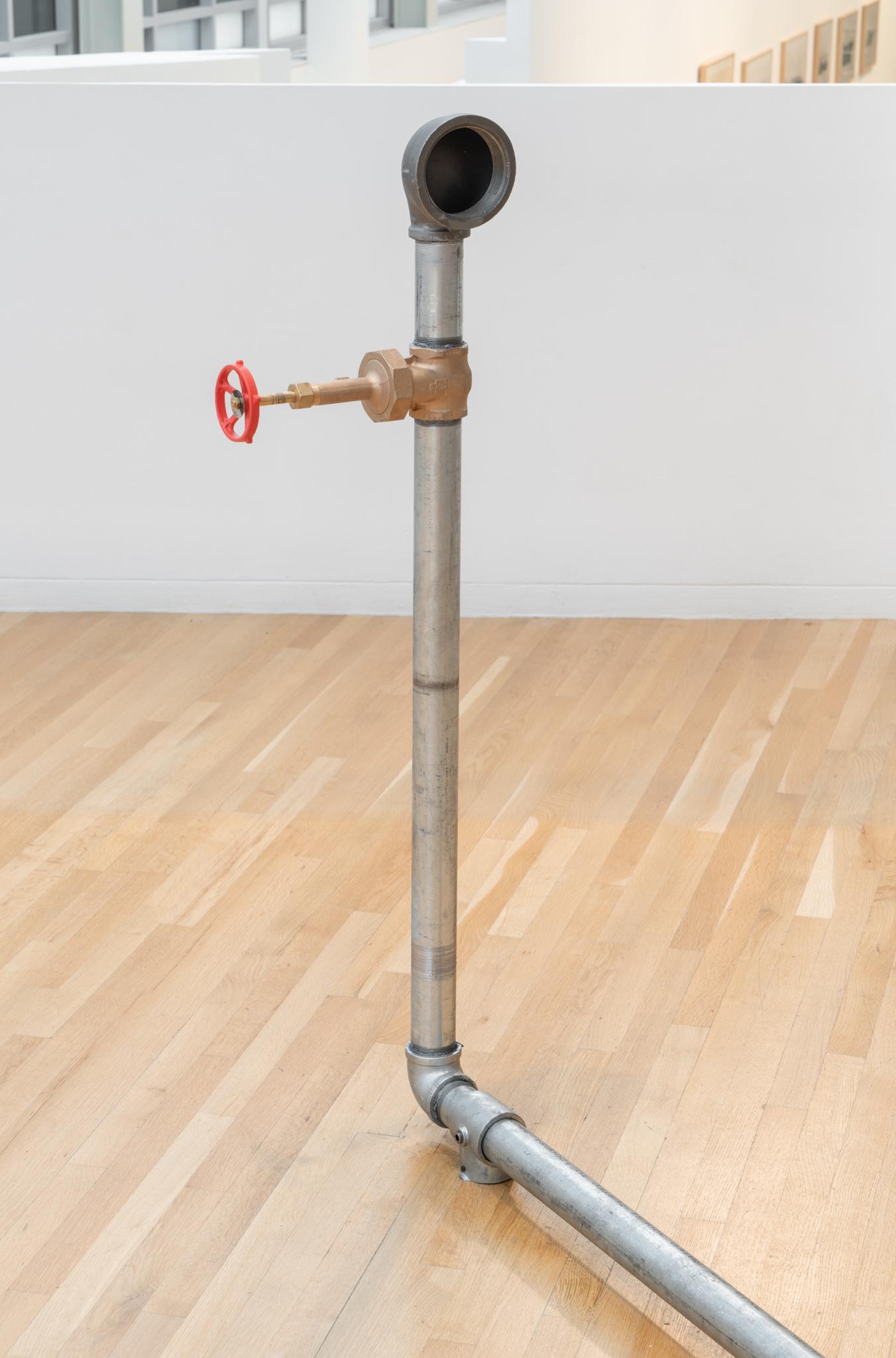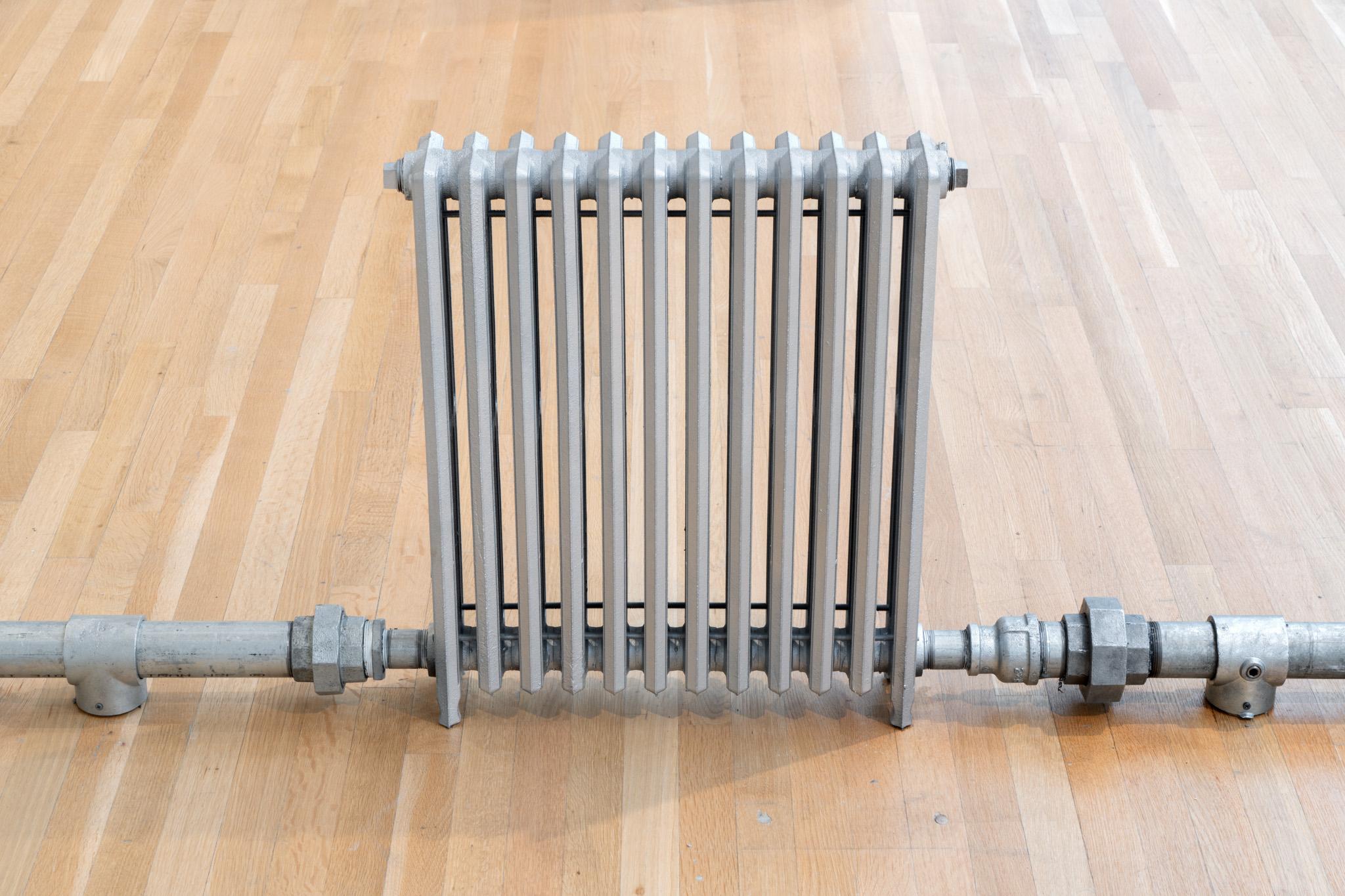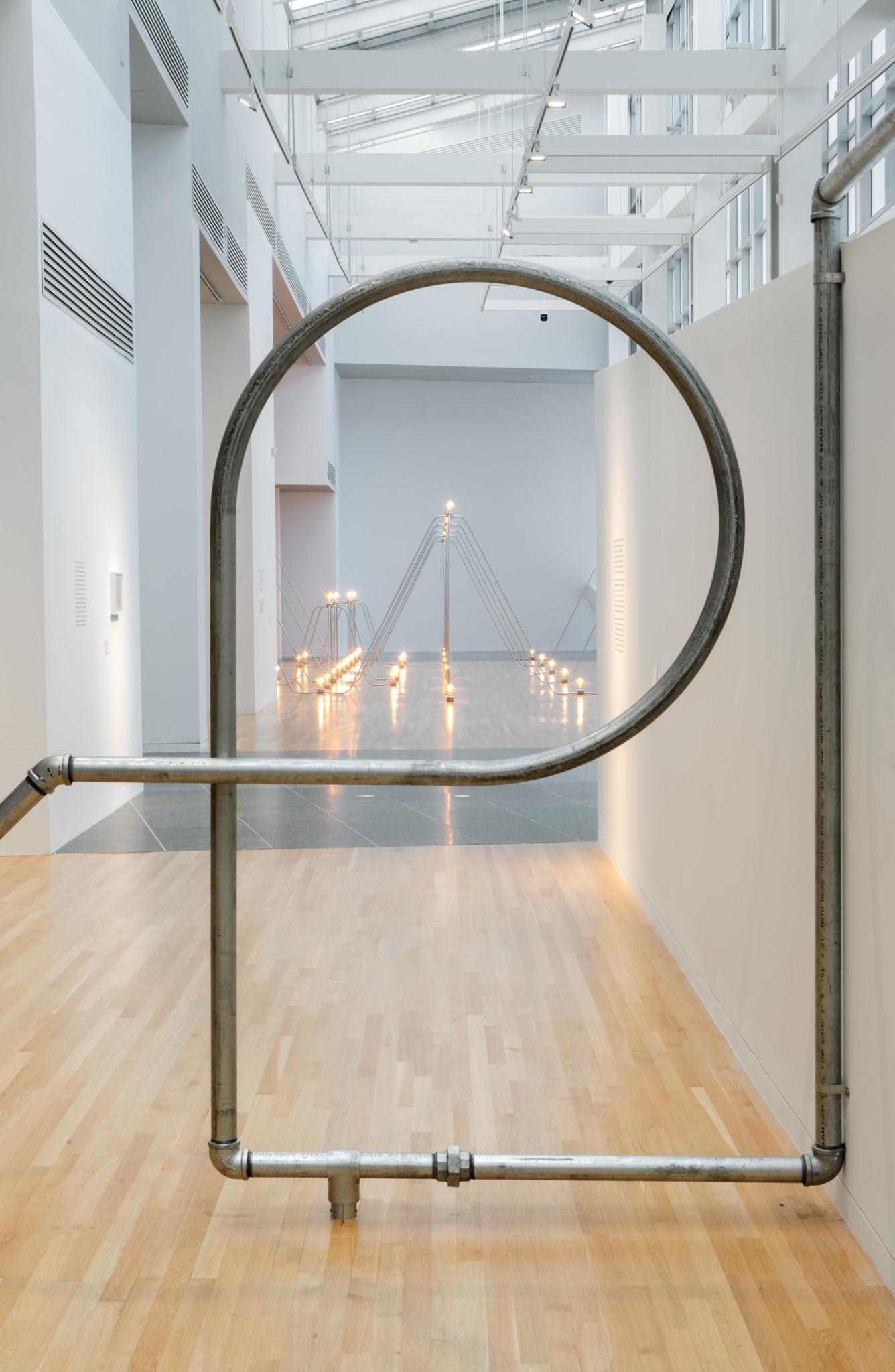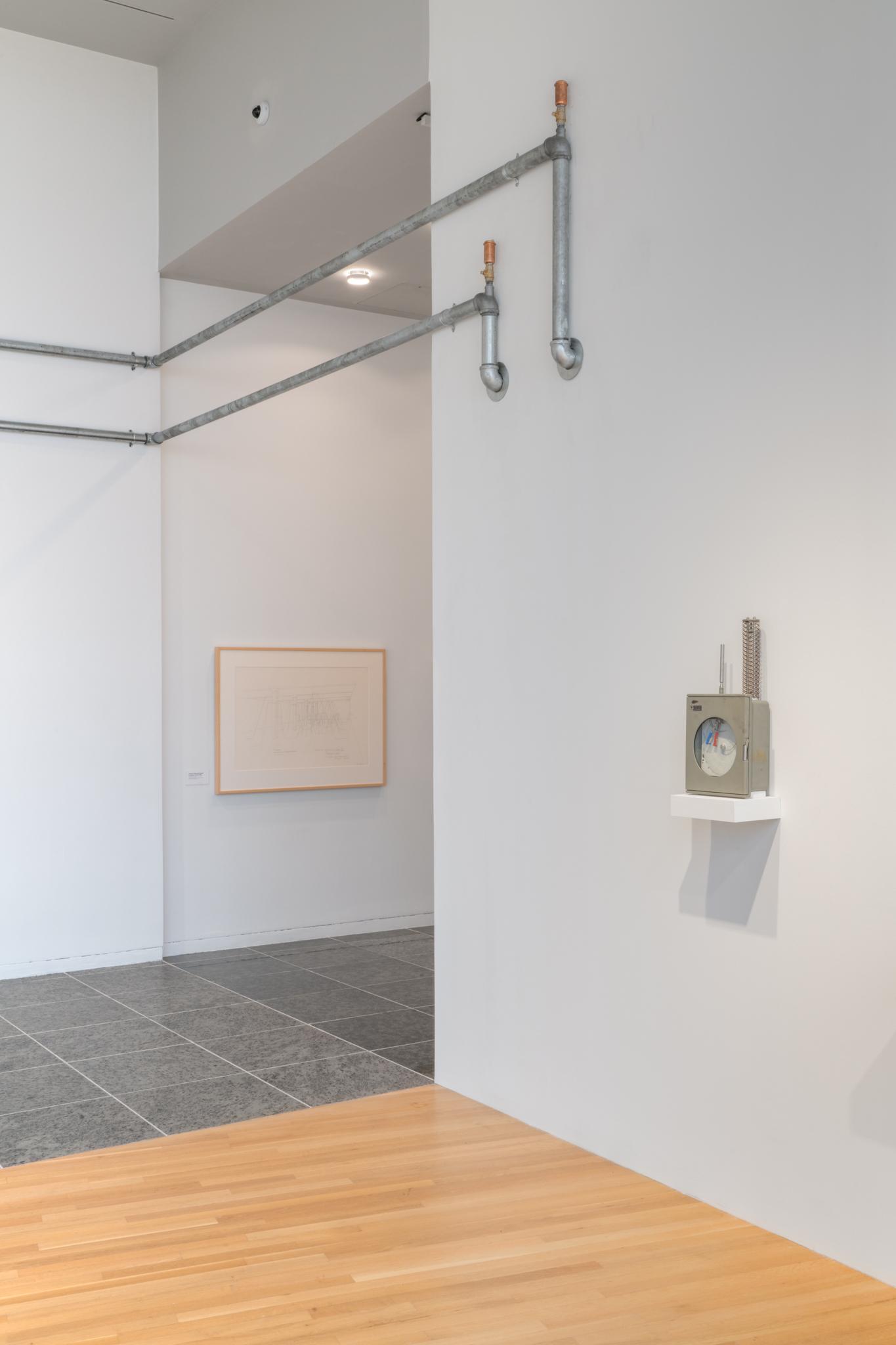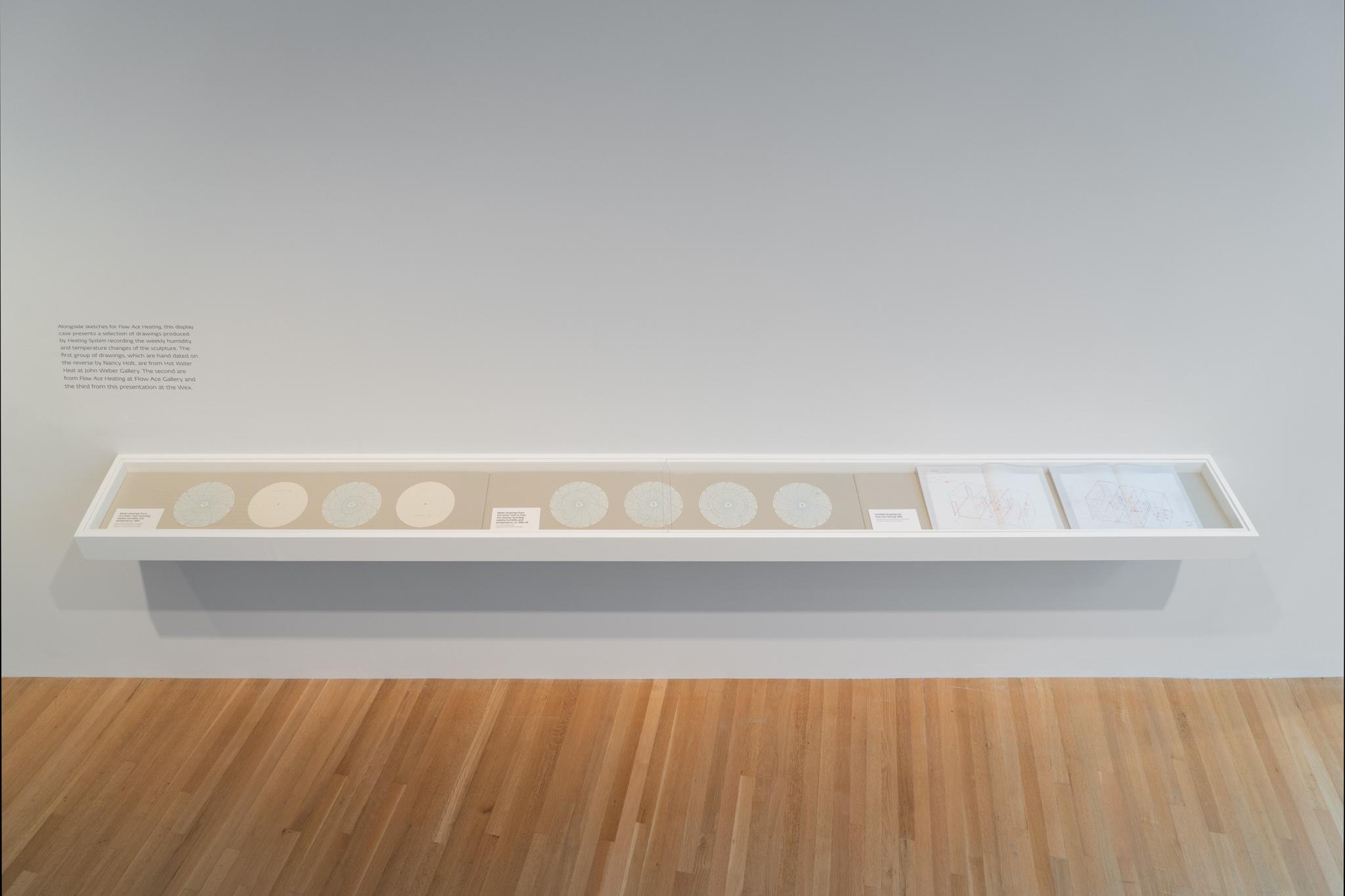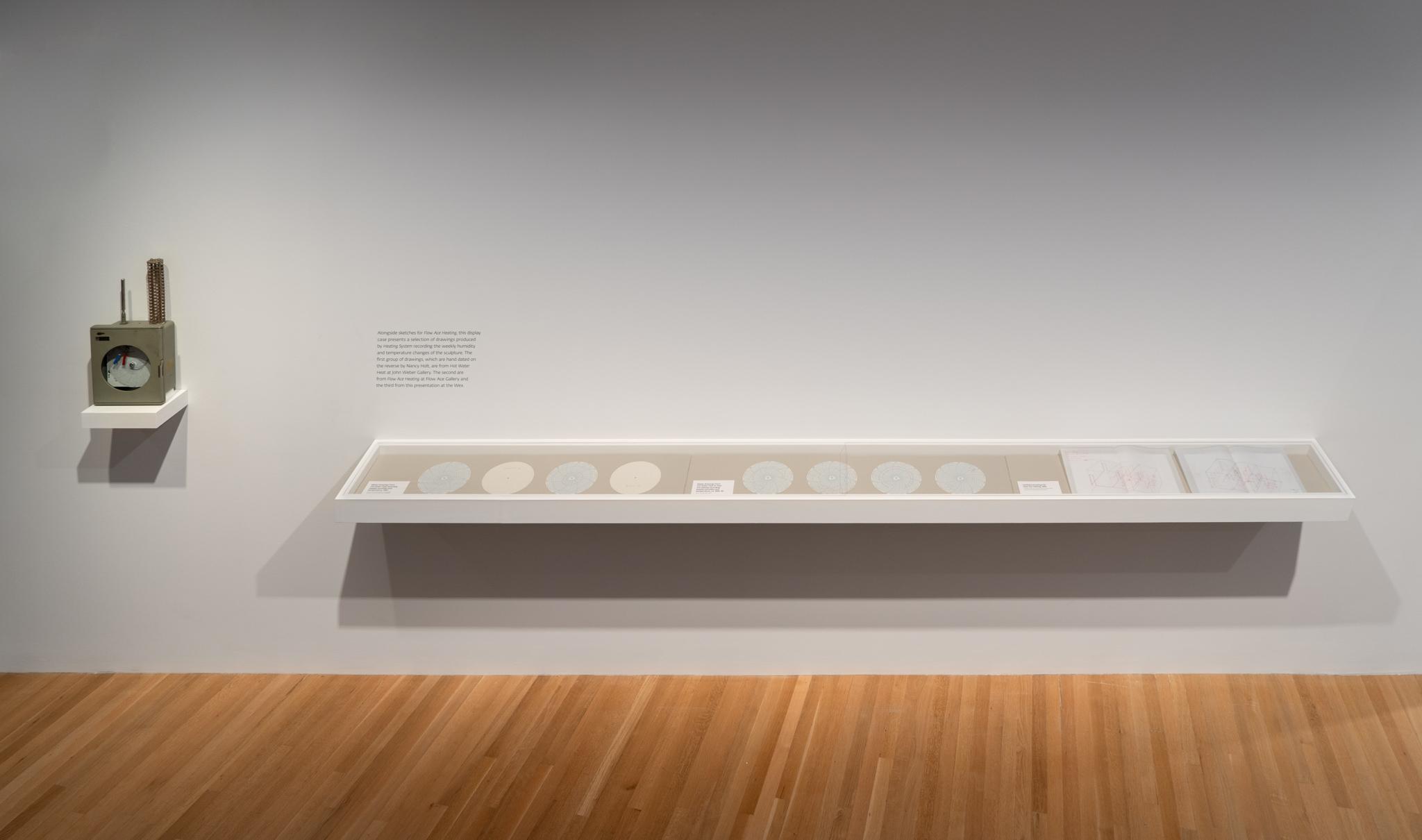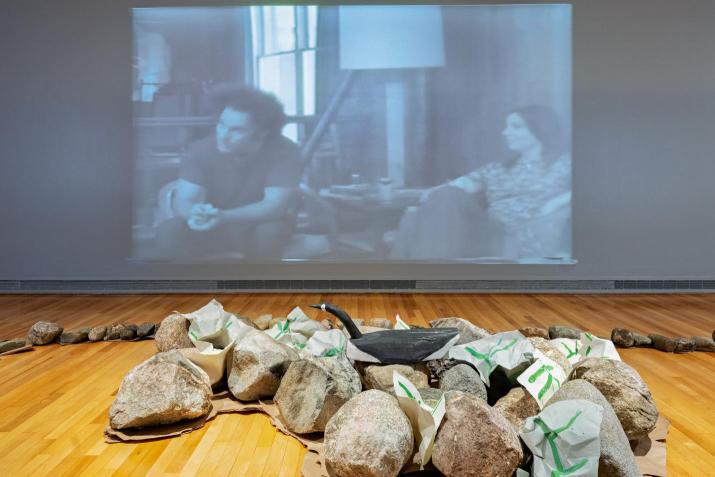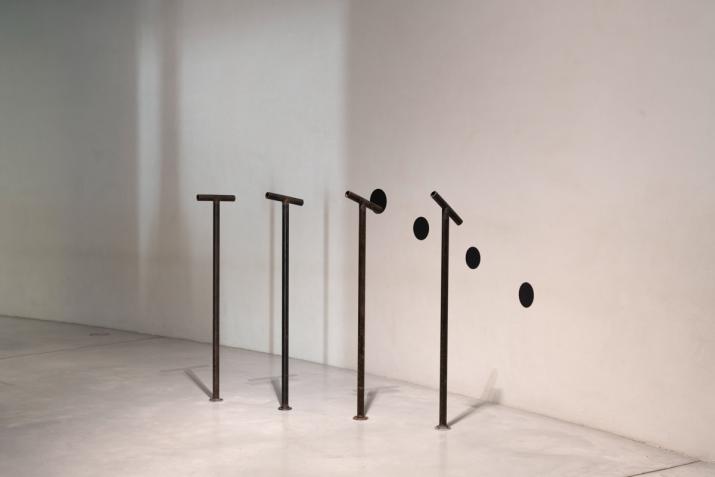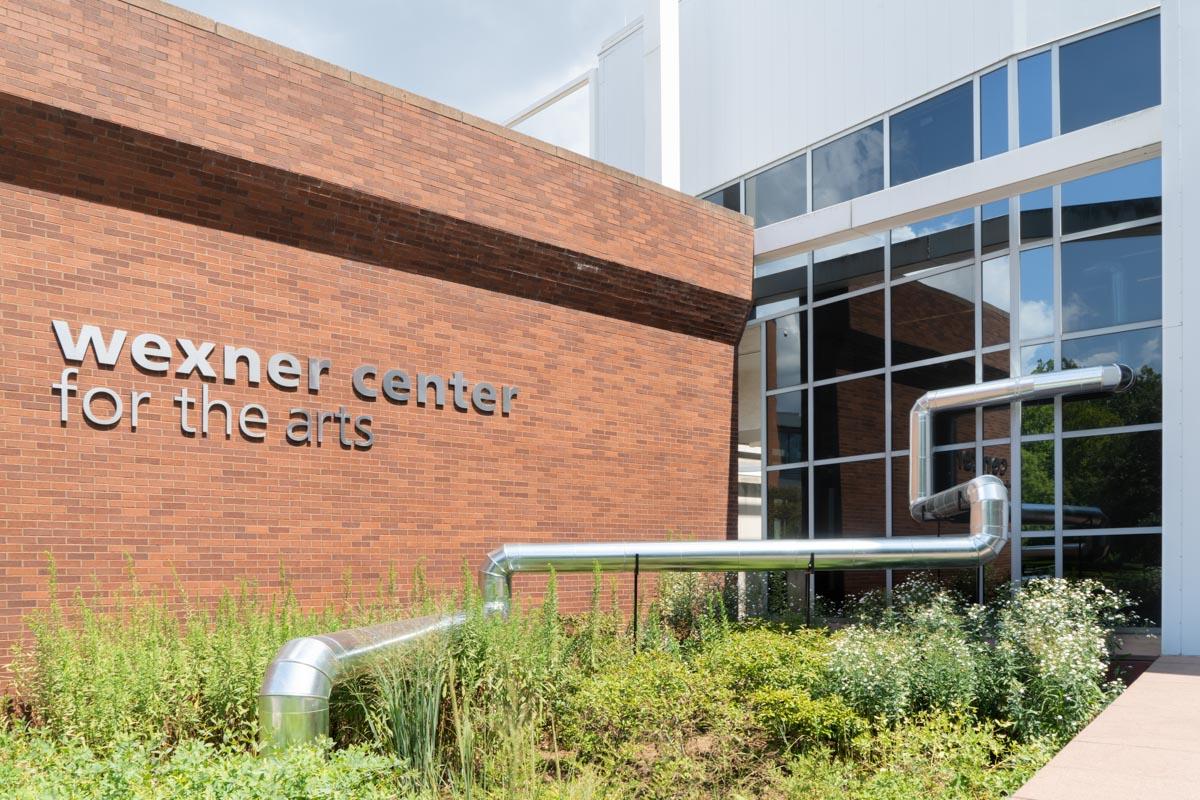

Nancy Holt: Power Systems at the Wexner Center for the Arts features the most extensive inquiry to date into Nancy Holt's studies of systems, focusing on her interactive site-responsive sculptural installations that expose the basic technological systems found in the built environment.
The Wexner Center presentation of her work launches August 16, 2024 with an installation of her 1986 sculpture Pipeline. The site-responsive piece winds its way inside and outside of the center and its lobby as a prelude to the gallery exhibition opening February 7, 2025.
Pipeline calls attention to the physical and economic systems powering buildings and to the impact of fossil fuel extraction. Holt visited Alaska in March of 1986 upon invitation from the Visual Arts Center of Alaska in Anchorage, who hoped she might create a work of art in celebration of the region’s beauty. Holt was instead struck by the infiltration of the Trans-Alaskan Pipeline through the Alaskan landscape. Pipeline was her response. The sculpture, comprising twisting steel pipes, winds down to the floor where one section of pipe leaks, creating an incessant drip of oil pooling thickly on a white base. It points to the unspoken failures of industrialization, and the devastating consequences of unchecked audacity.
Pipeline is one of Holt’s System Works, which reveal the mechanics of everyday technological structures that move air, heat, light, and energy through the built environment. In 1992 Holt noted how “these technological systems have become necessary for our everyday existence, yet they are usually hidden behind walls or beneath the earth and relegated to the realm of the unconscious. We have trouble owning up to our almost total dependence on them.”
In February 2025, the Wex’s expanded presentation of Nancy Holt: Power Systems extends into the galleries with additional sculptures, installations, and works on paper focused on literal and metaphorical flows of power.
Holt’s earliest works utilized the written and spoken word, exploring language as a system structuring perception and understanding of place. She used standard office reprographic technology—the tape recorder, the fax machine, and the photocopier—to execute and distribute her works on paper, reprographic tools that were the new media of her time.
Two years after making her first artwork, she started to explore photography during her travels, creating series capturing systems of signage, of land ownership, and of the unpredictability of the weather on the surfaces of urban asphalt. The 1969 photographic series Texas Claims is a study of private property and nature’s refusal of borders.
In the early 1970s, she forced her voice into spaces exhibiting art, creating audio works that she called “poems in place”—soundscapes that formed pictures of her physical explorations. Holt was as interested in the built environment as she was natural and celestial landscapes. A fascination with the cycles of the sun and moon, and with the sun as a source of energy, inspired her landmark earthwork Sun Tunnels (1973–76) and the corresponding film, which will be on view at the Wex.
In the 1980s Holt’s exploration of systems focused on the fabric of the built environment with functional sculptural installations created with standard industrial materials, which she termed System Works. As Holt described, “The electrical systems light, the heating systems heat. The drainage systems drain, the ventilation systems circulate air […] the sculptures are exposed fragments of vast hidden systems, they are part of open-ended systems, part of the world.”
Nancy Holt: Power Systems features the first posthumous presentation of Heating System (1984-85), a room-sized sculpture that exposes heating infrastructure. Steel pipes twist and loop around the exhibition space, punctuated by gauges and radiators, with a valve wheel at the structure’s center. Visitors are invited to turn this wheel, enabling them to have control over the flow of hot water through the pipes, and thus the temperature of the room. Inside the exhibition space a gauge on the wall records changes in temperature and humidity in red and blue ink on a piece of graph paper, meaning "the sculpture produced its own drawing, which I thought was an interesting idea." Holt had a continuous practice of drawing, and Nancy Holt: Power Systems includes previously unexhibited works on paper showing Holt’s ideas for both realized and unrealized System Works.
Nancy Holt: Power Systems is curated by Lisa Le Feuvre, Executive Director of Holt/Smithson Foundation.
